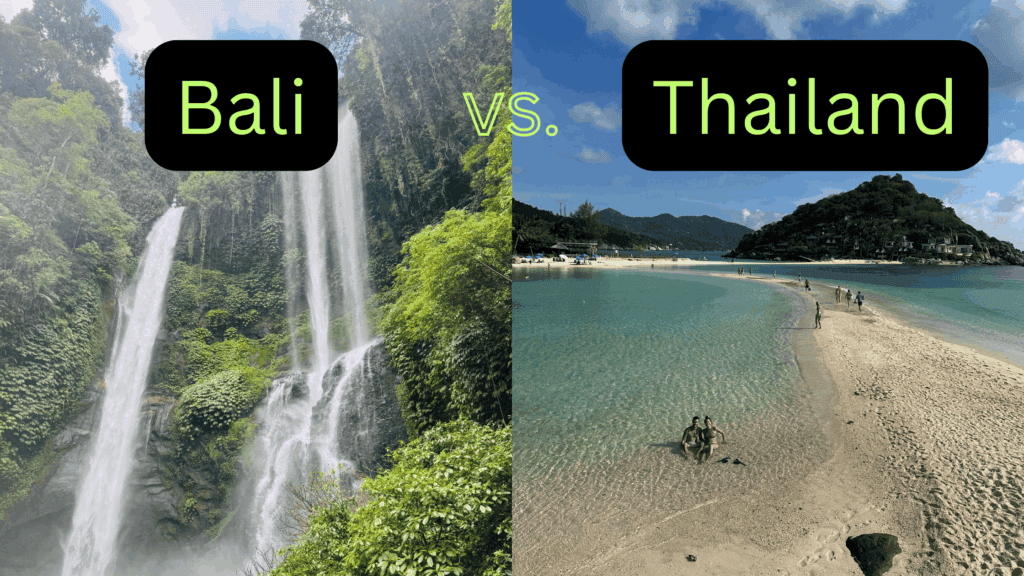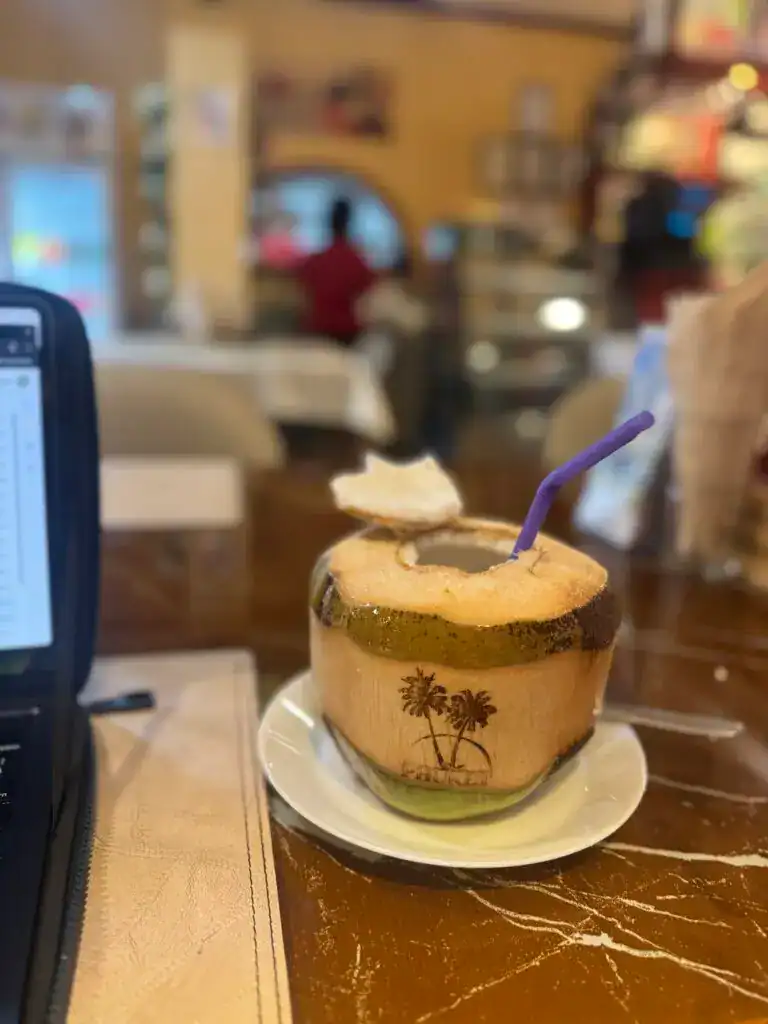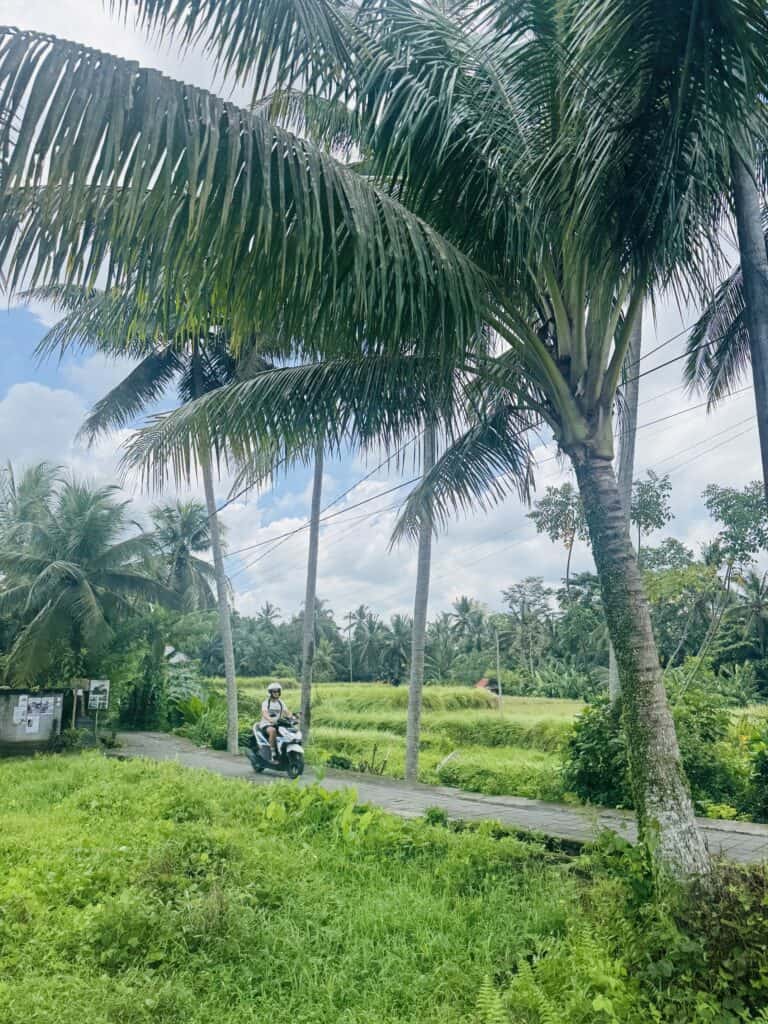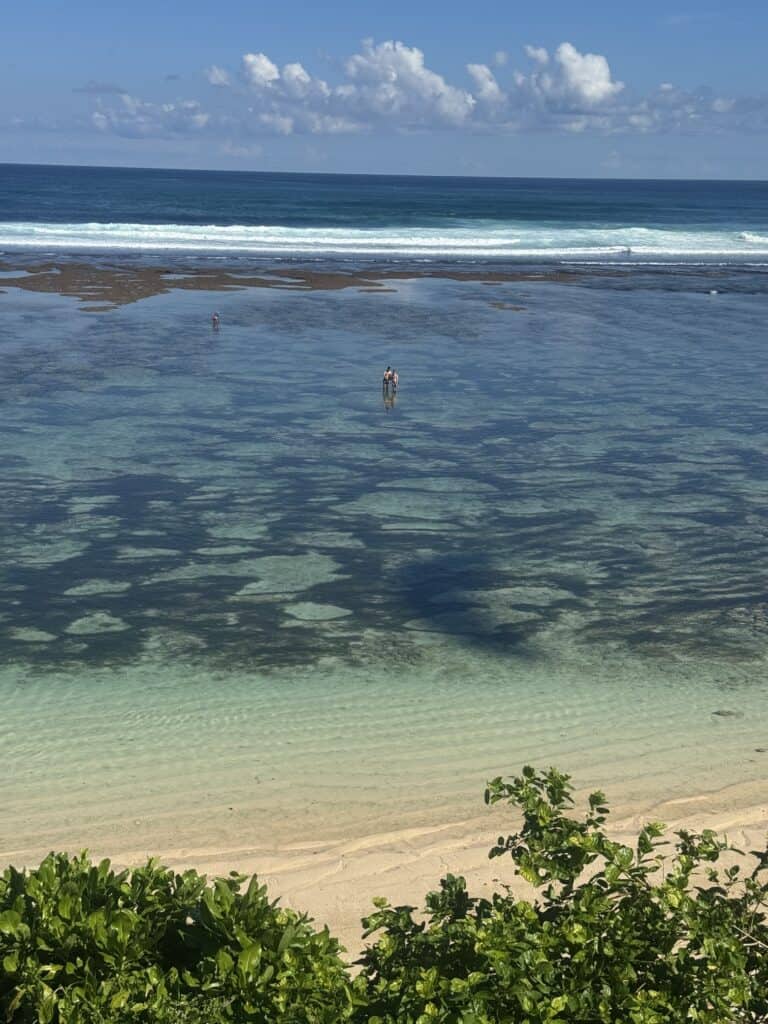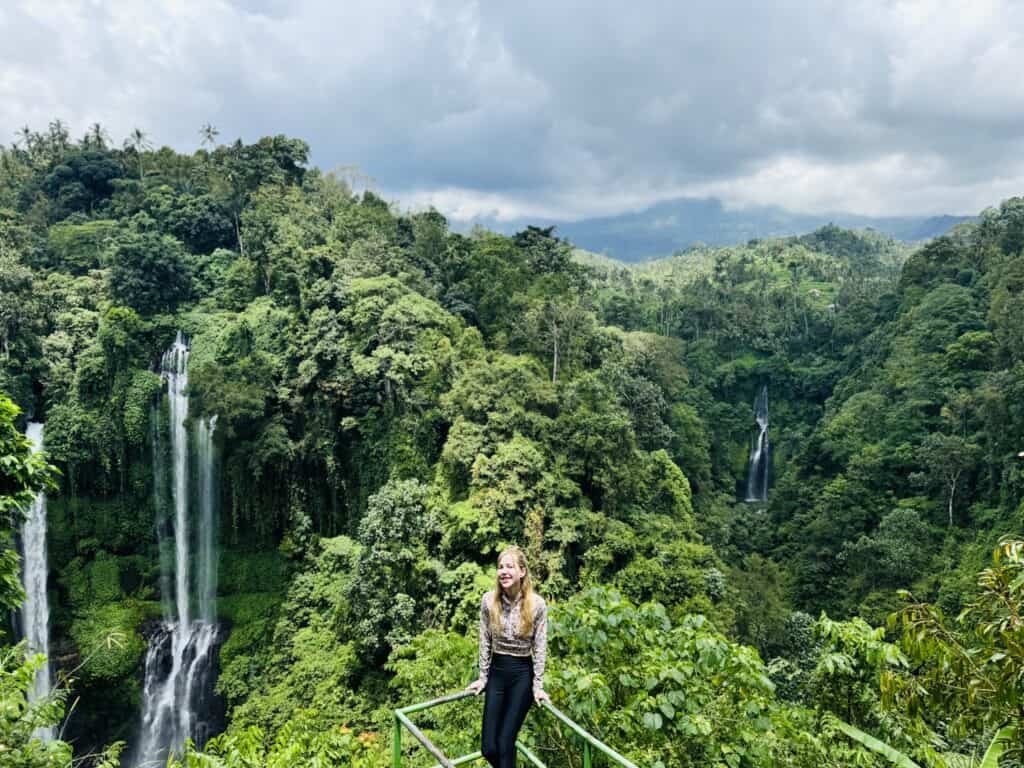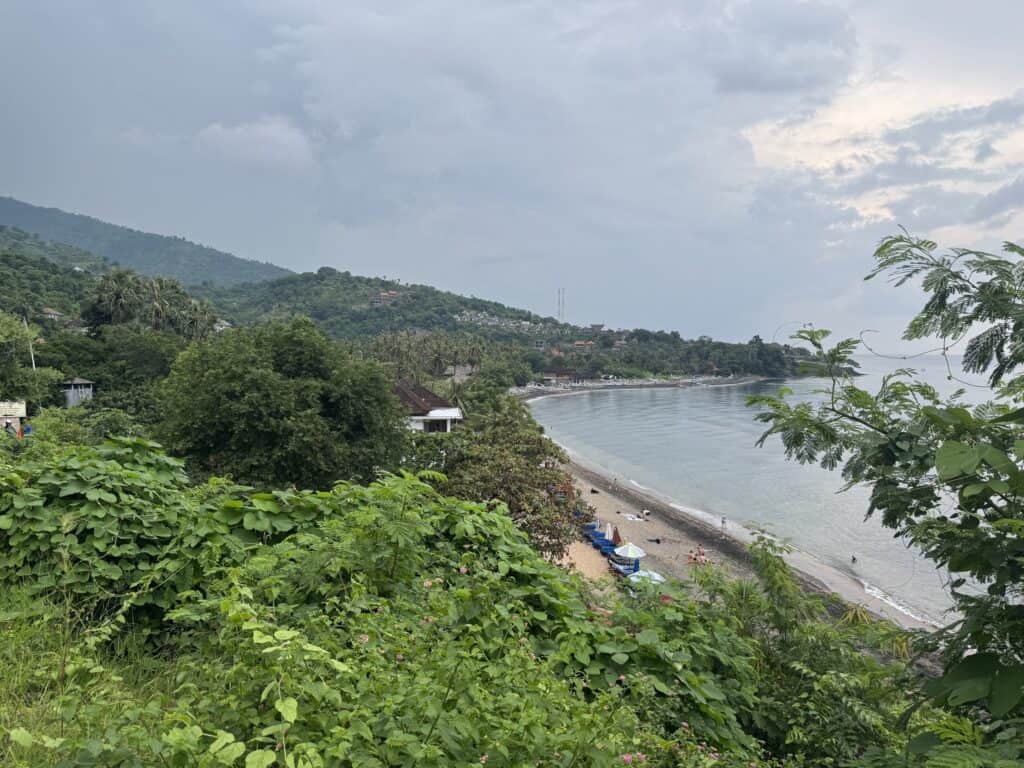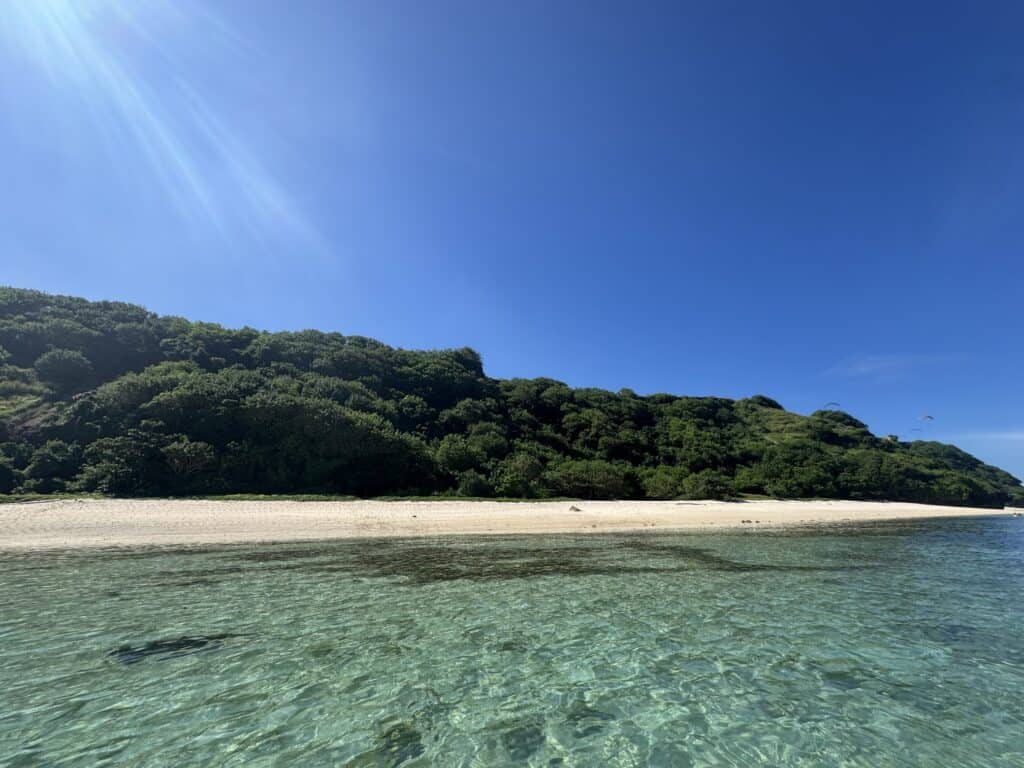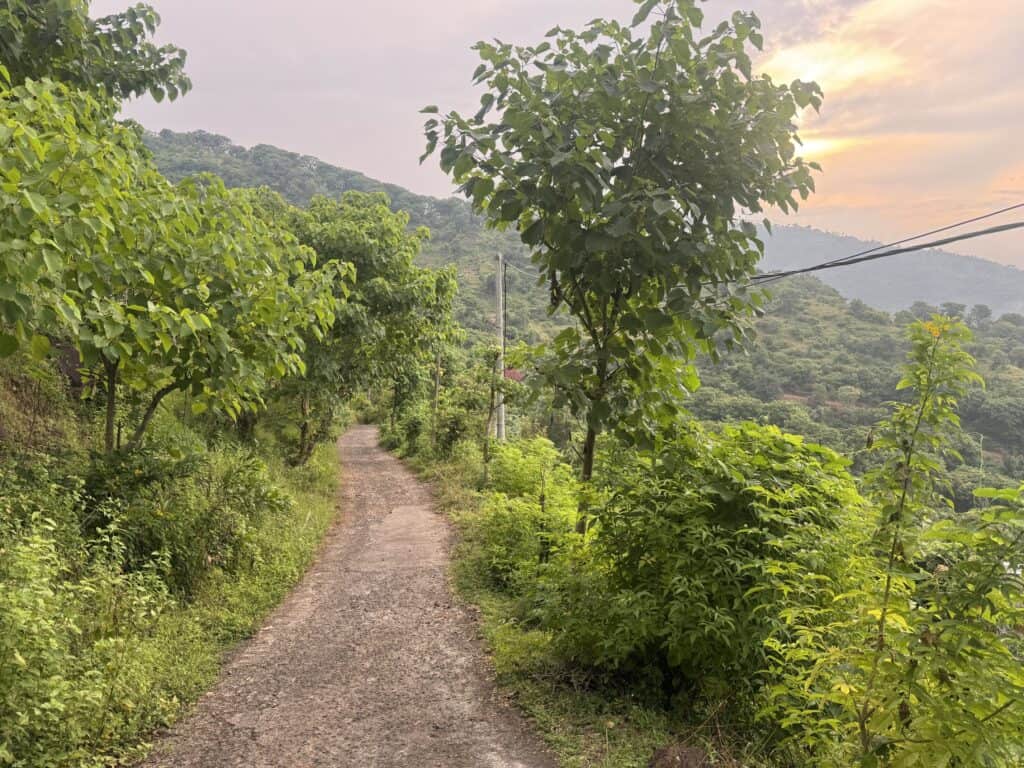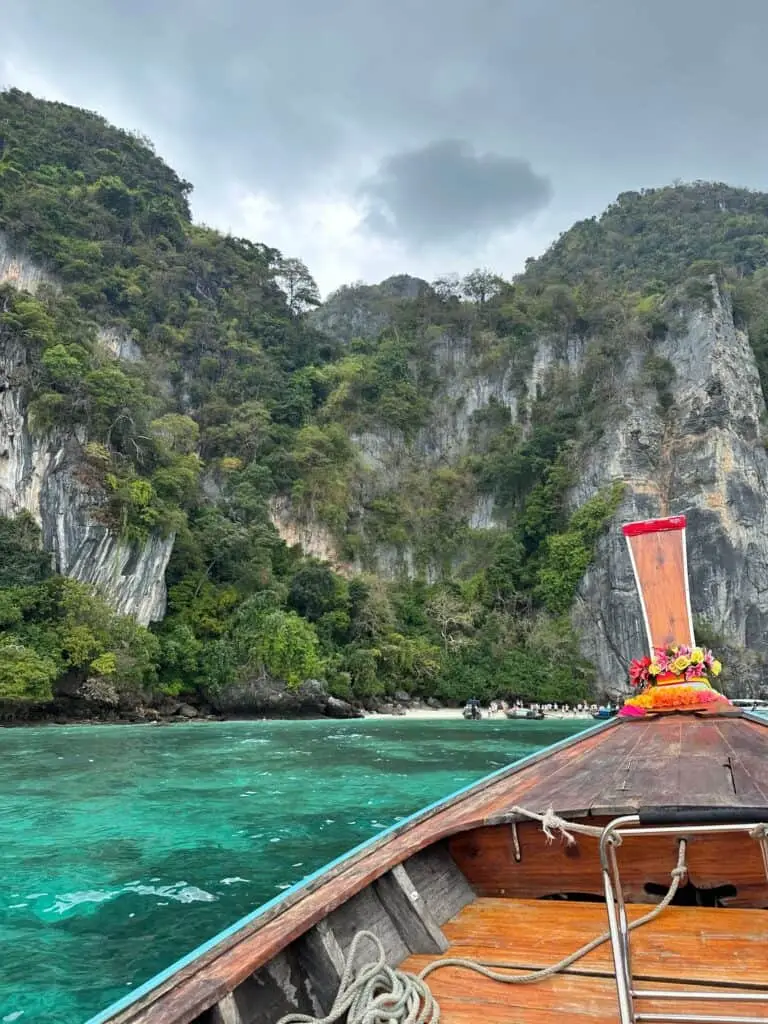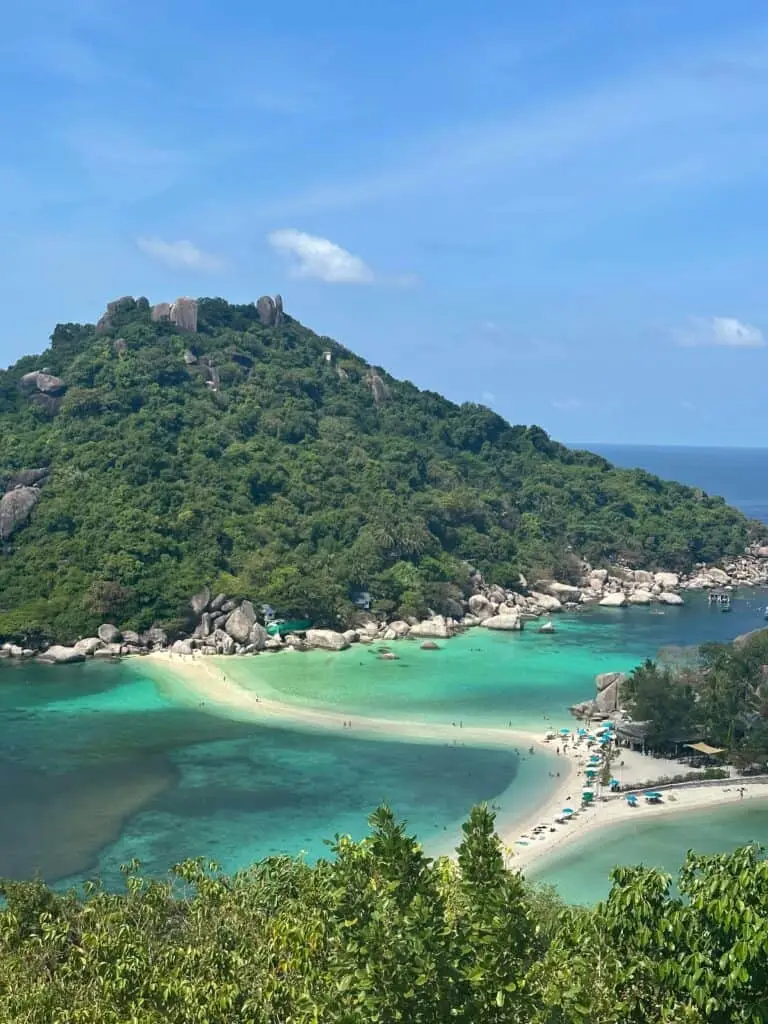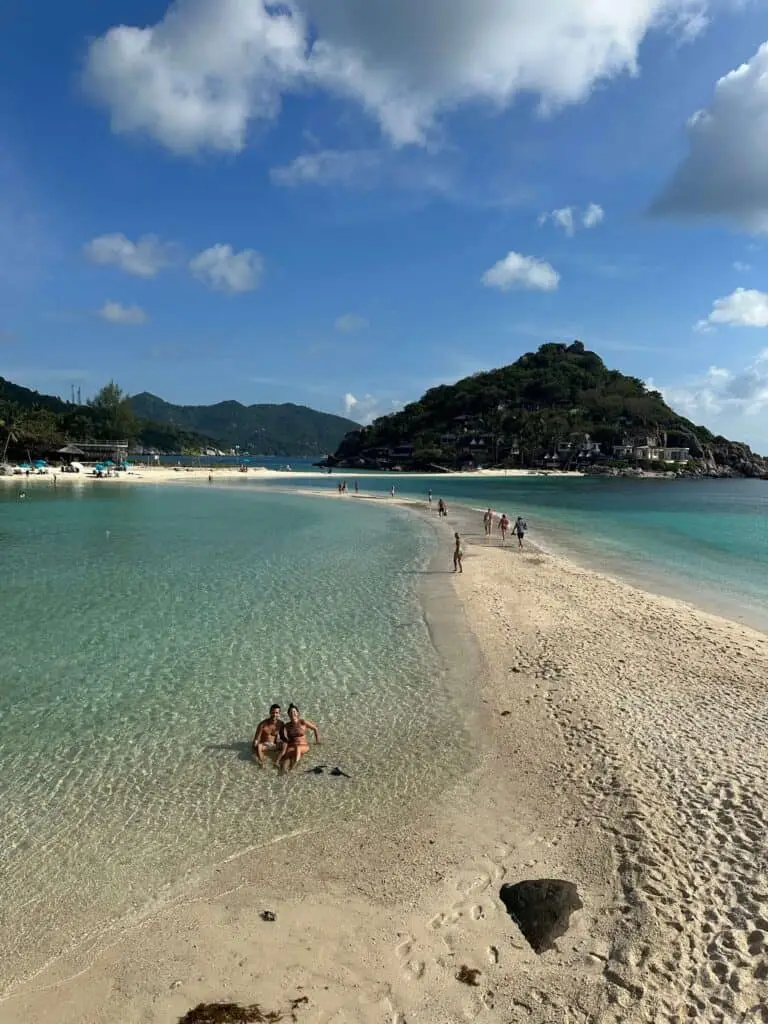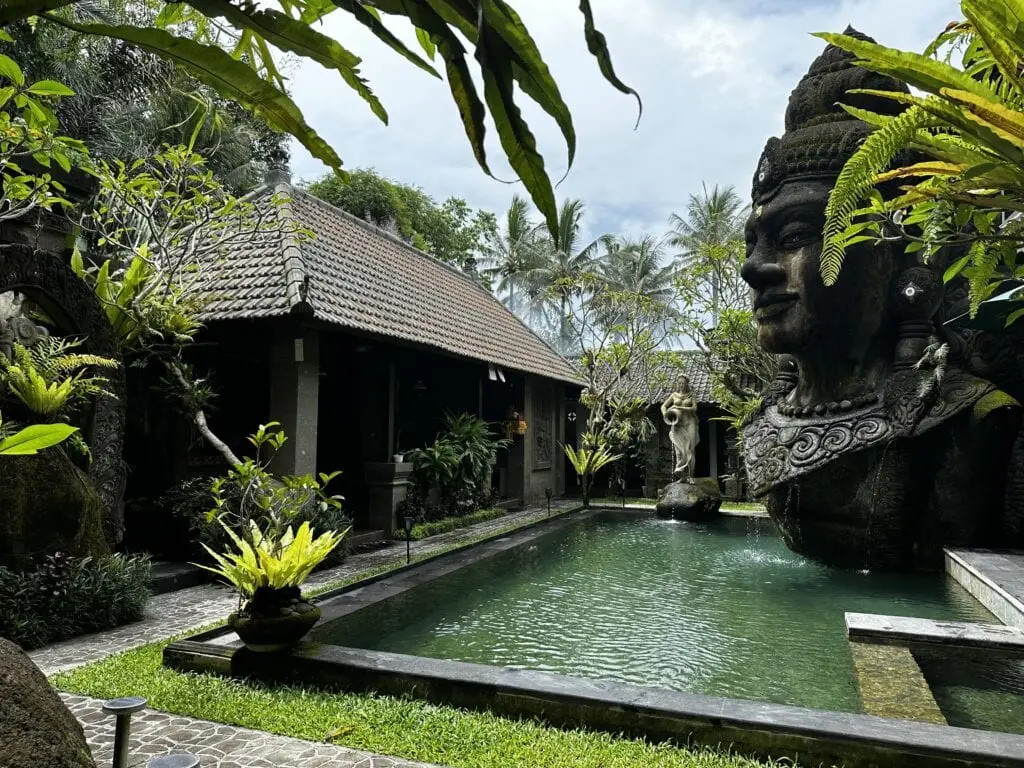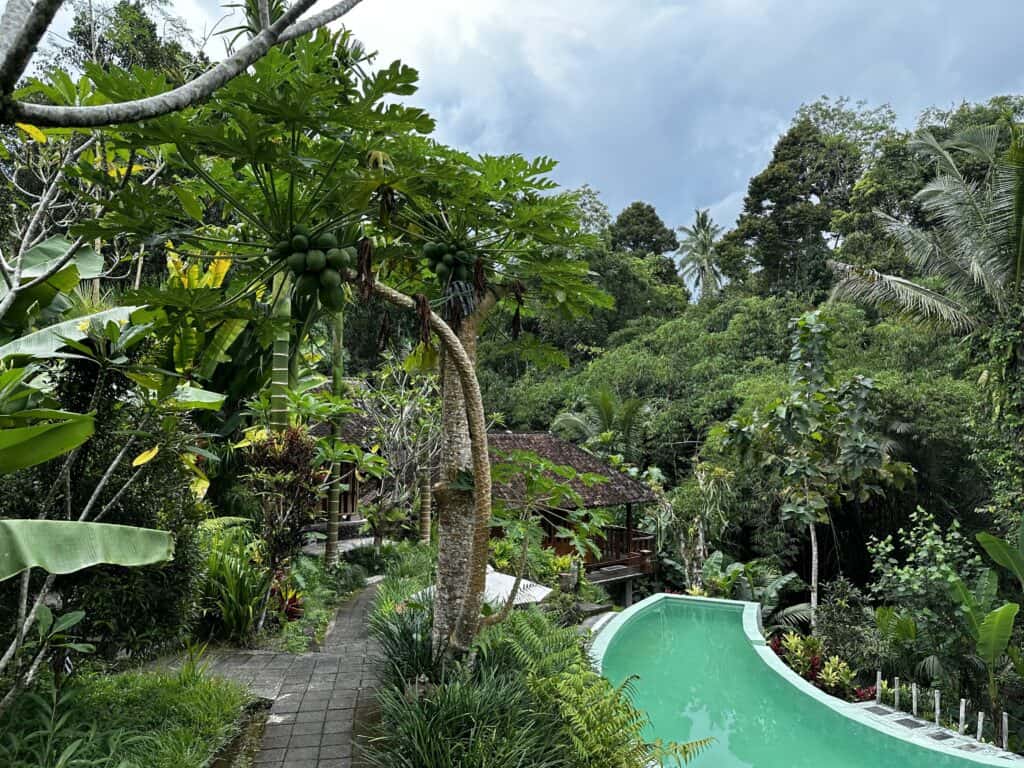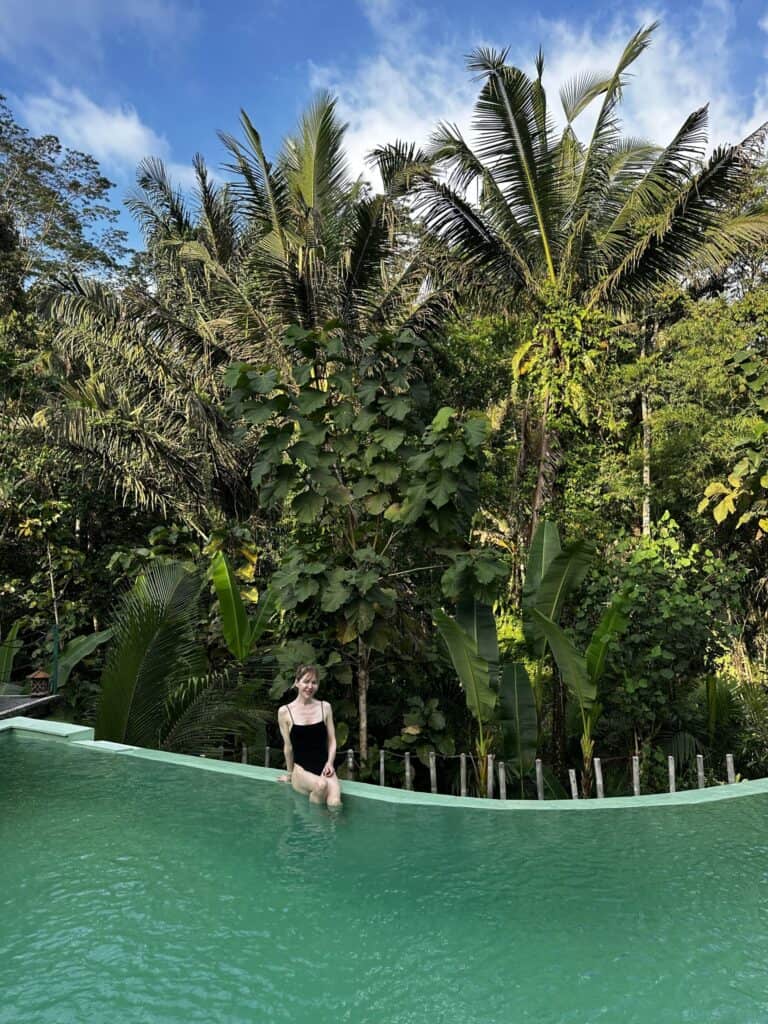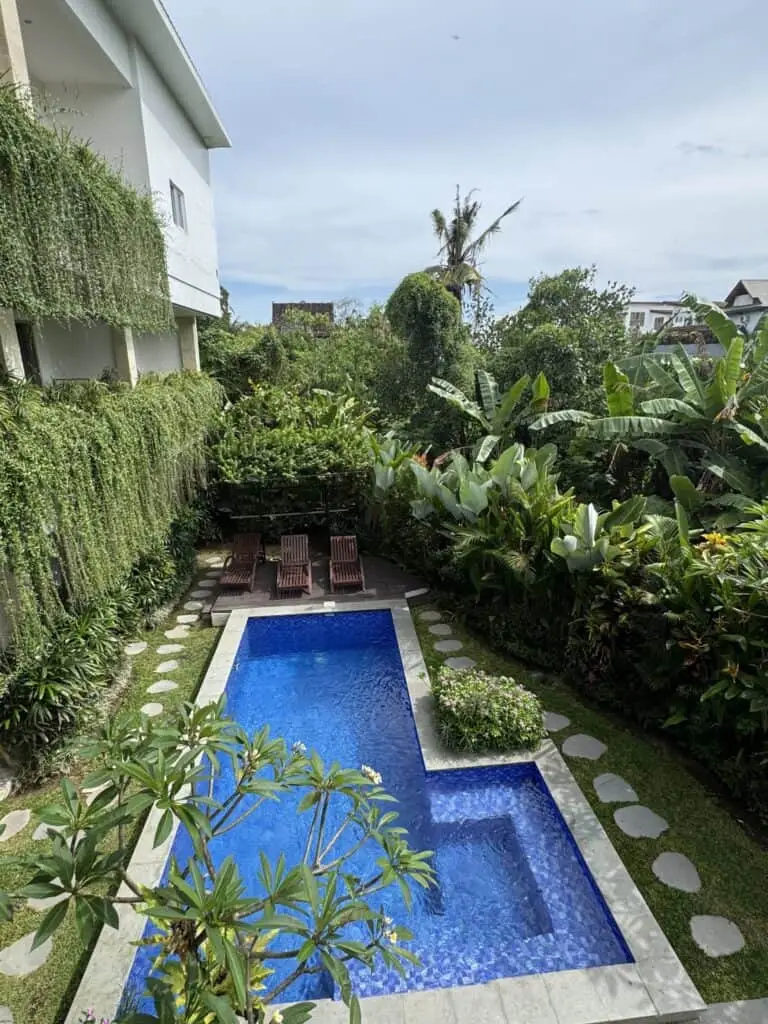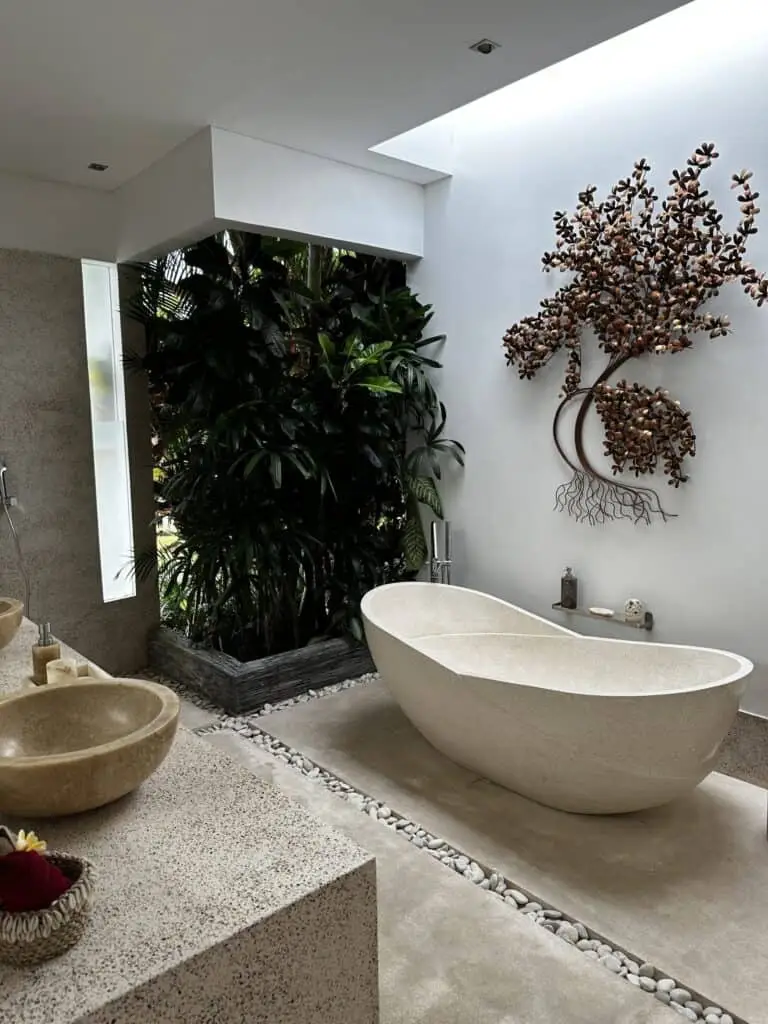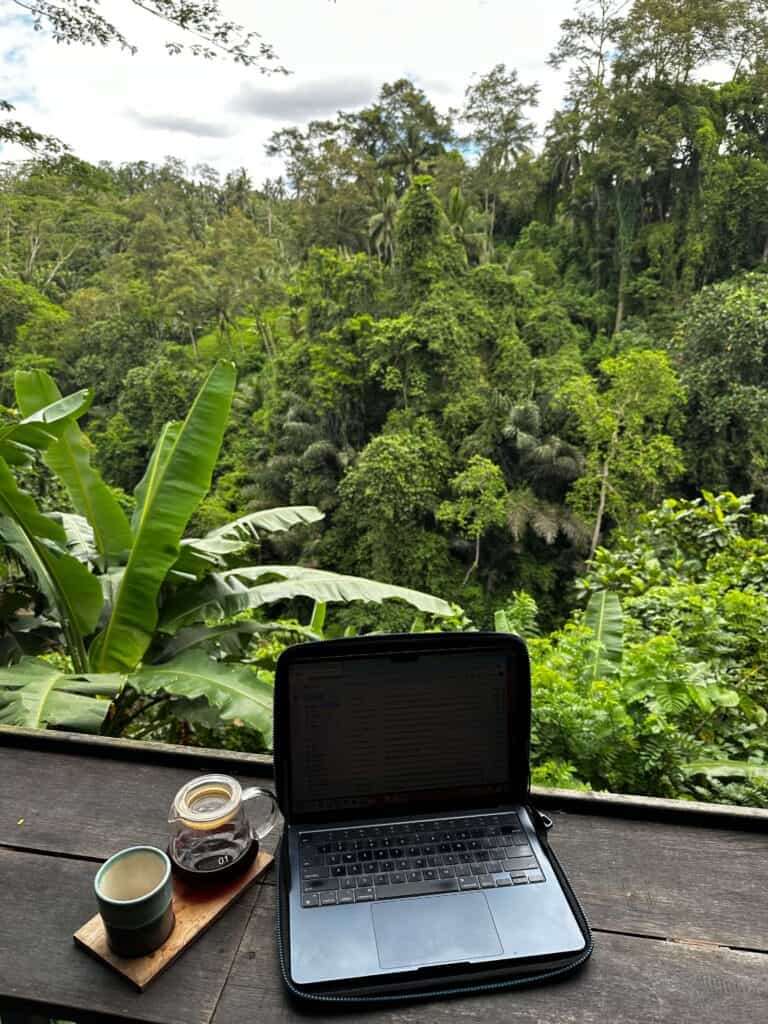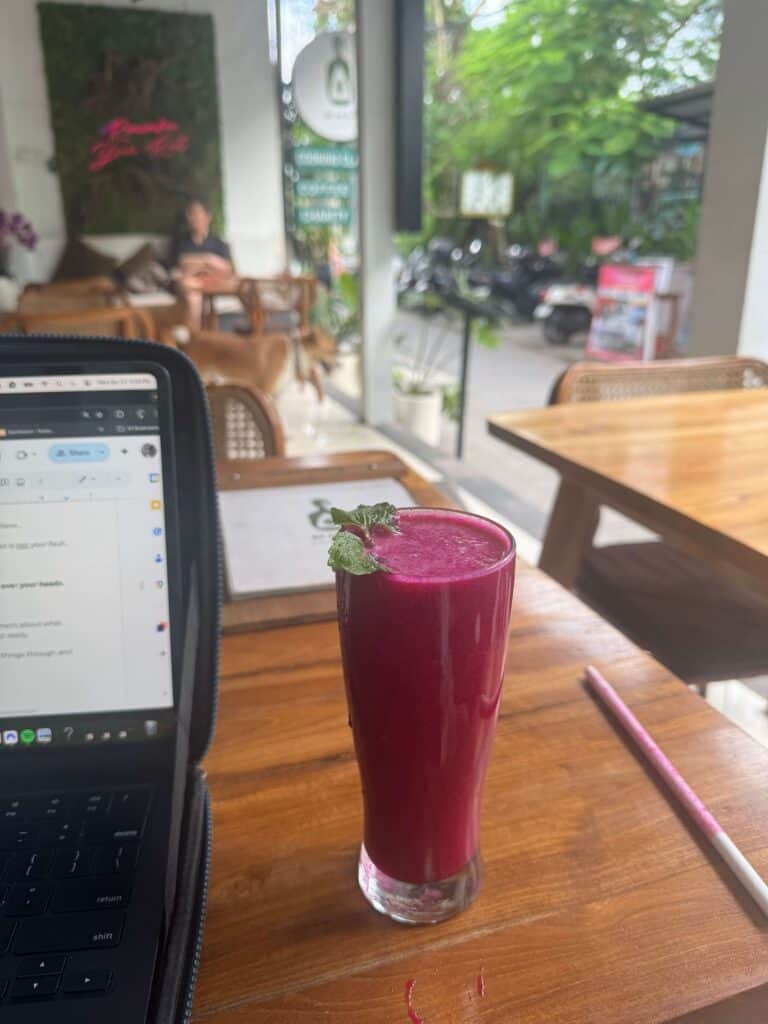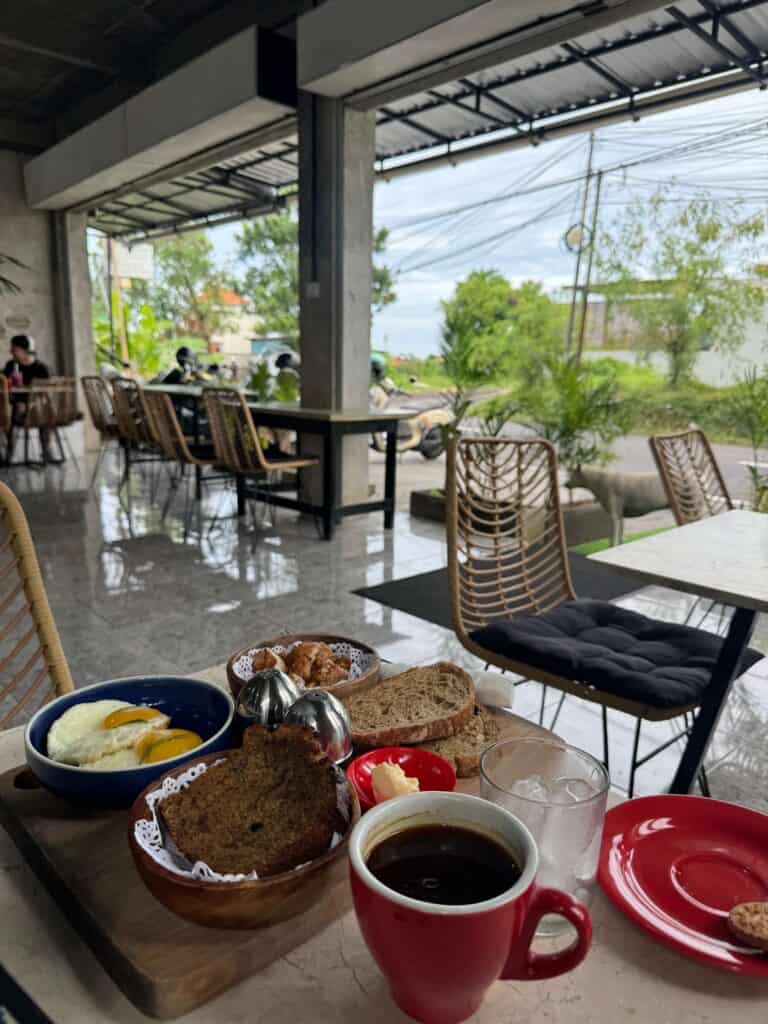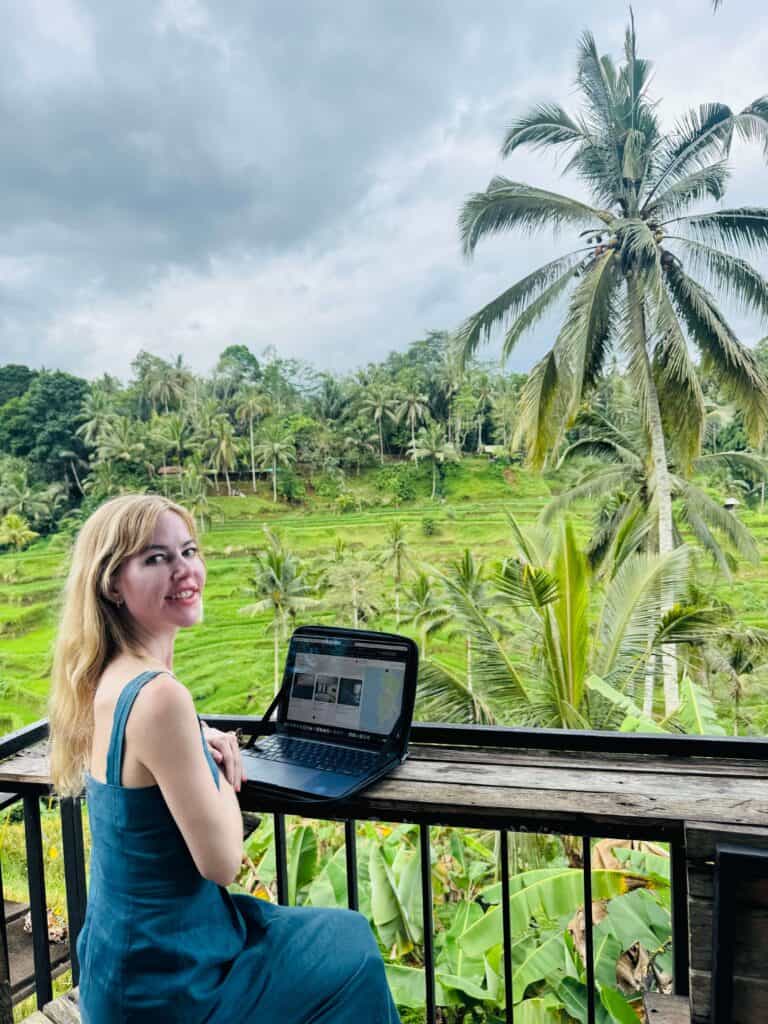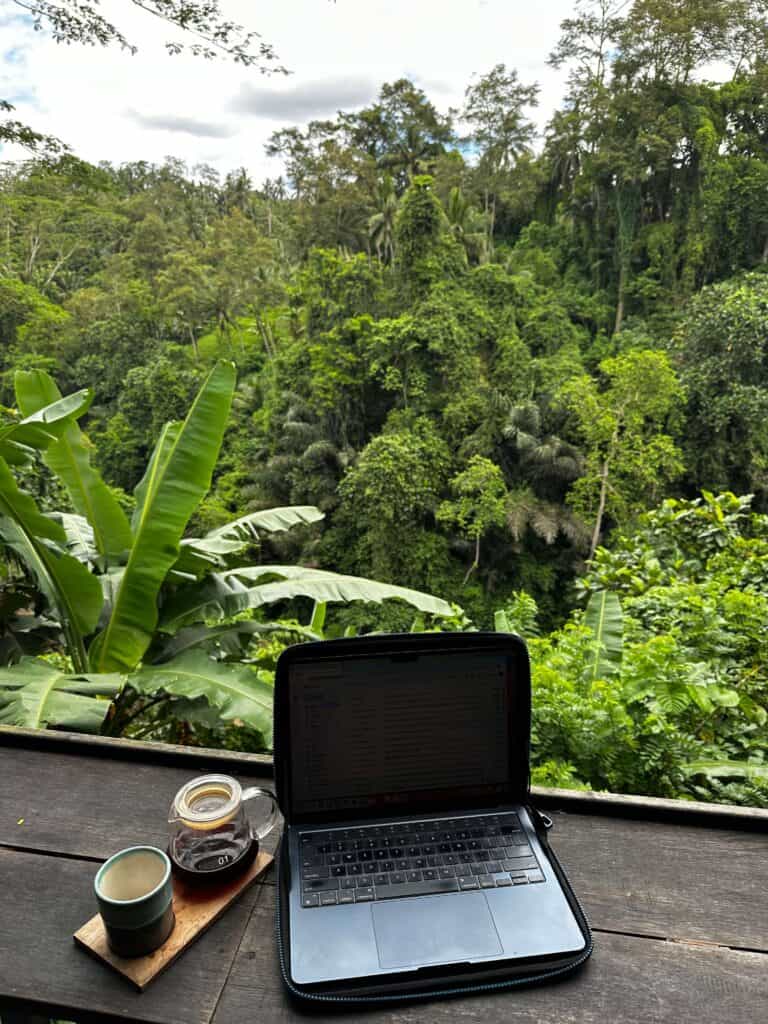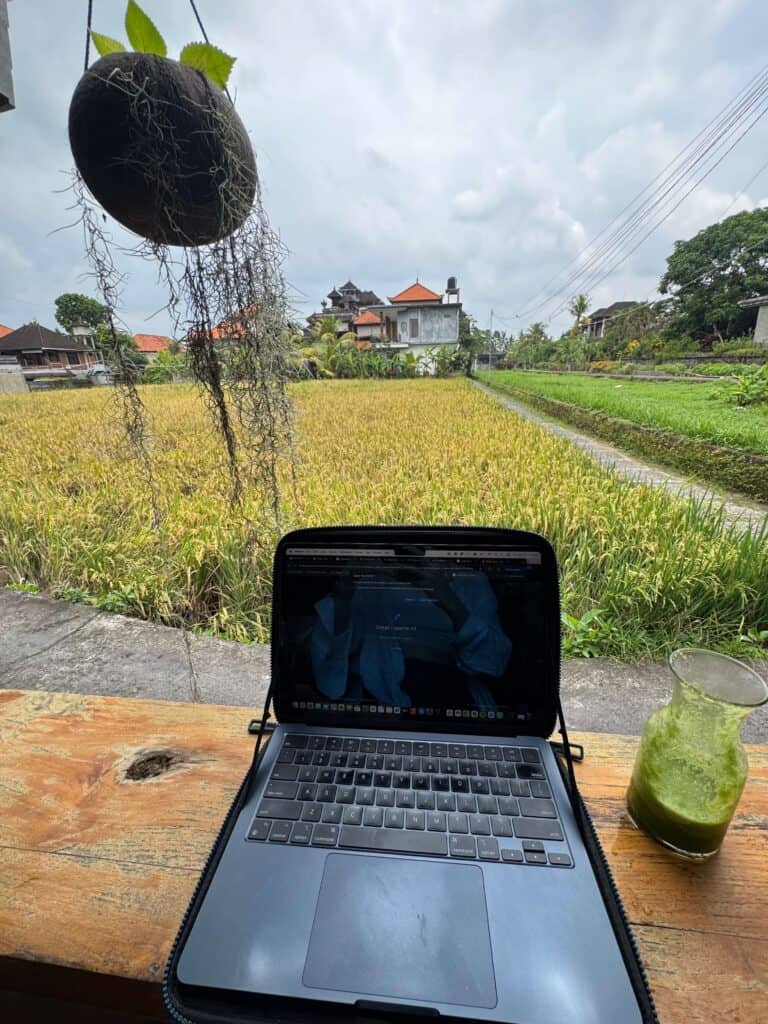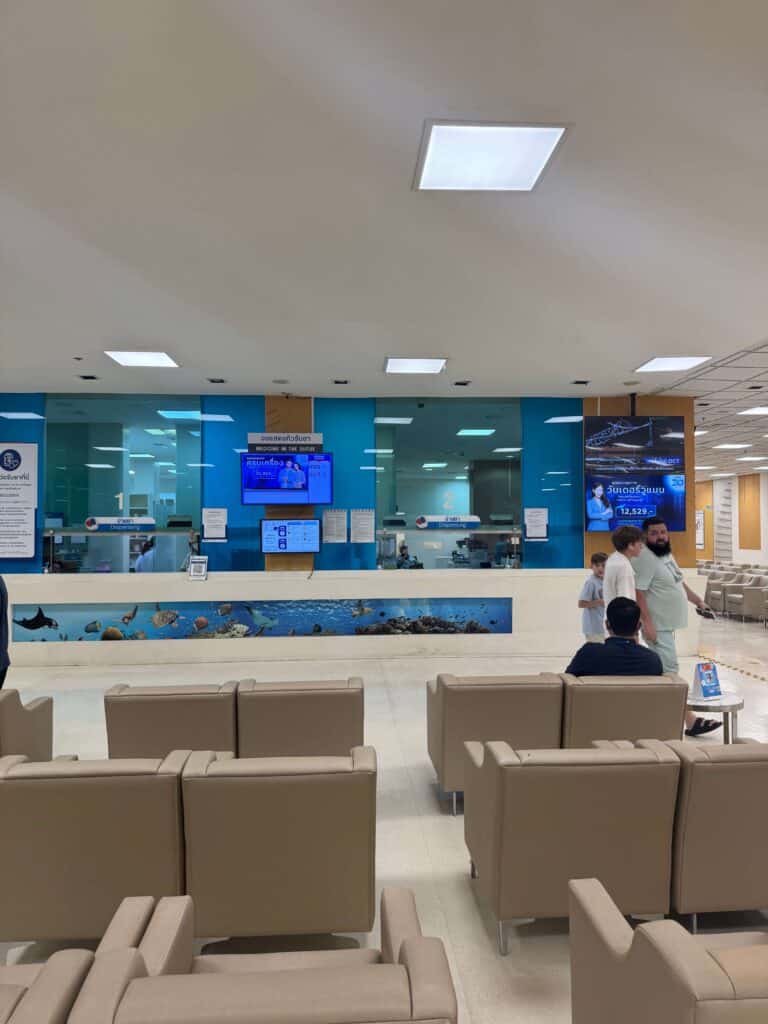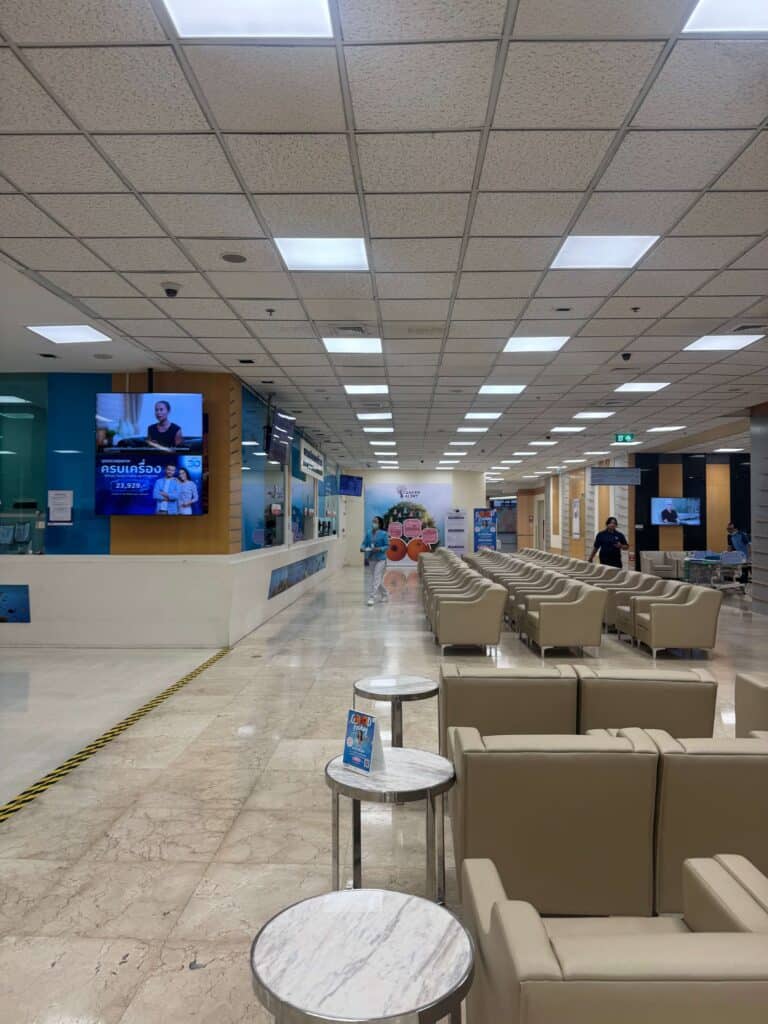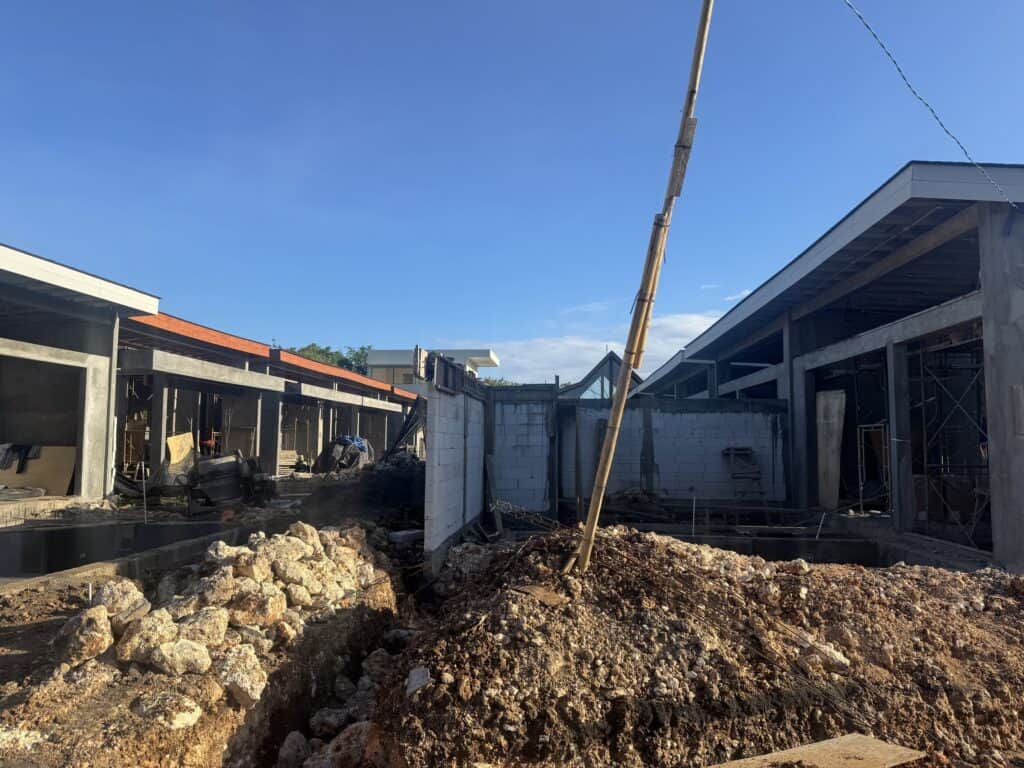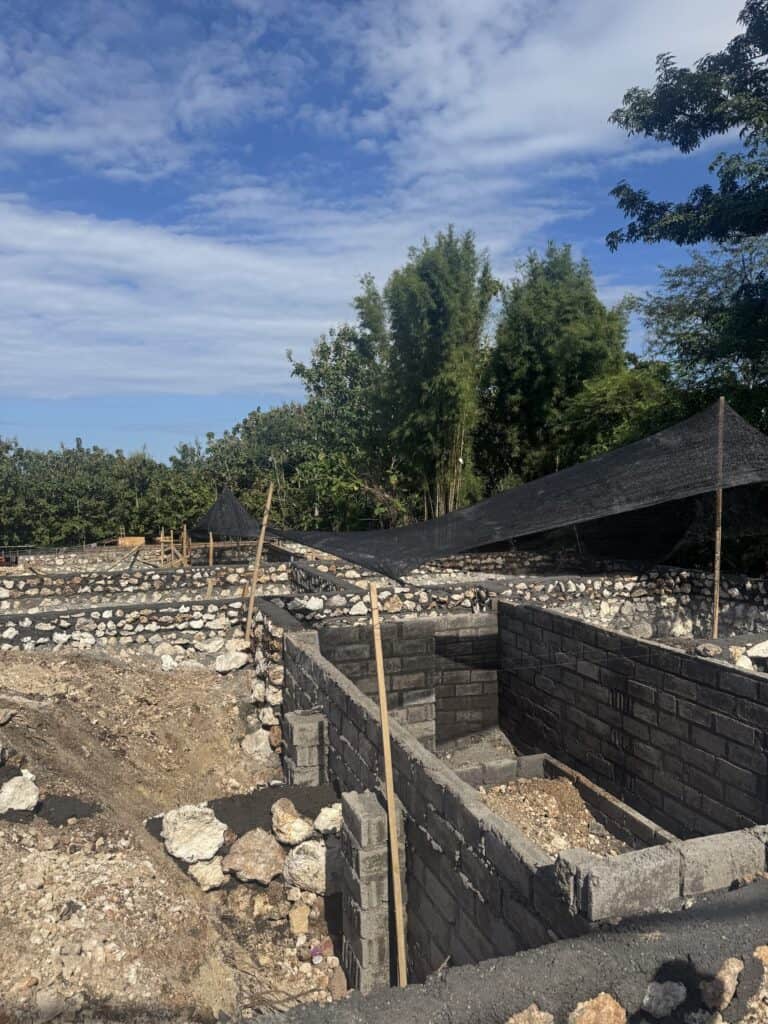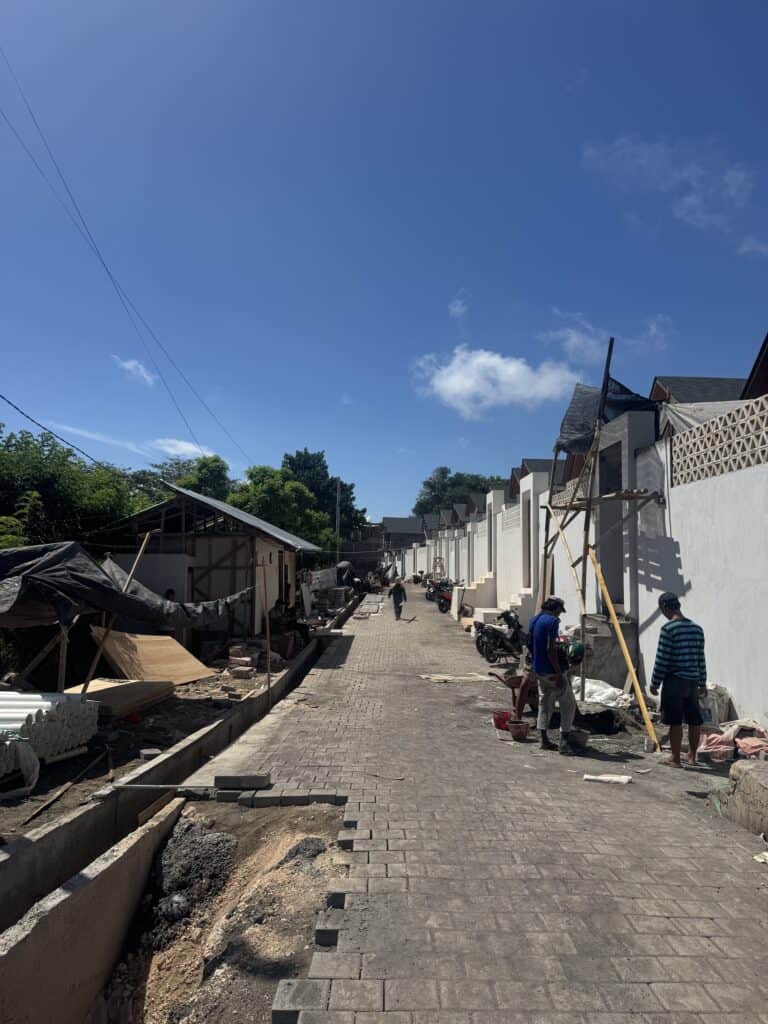Torn between booking a flight to Bali and Thailand?
I don’t blame you! Both places have a lot to offer: Stunning landscapes. Fascinating cultures. And an affordable lifestyle.
But they are also very different. Not to state the obvious, but Bali is a small island in Indonesia. While Thailand is a (much bigger) country with more diverse landscapes, climate and micro cultures.
Geography aside, there are some key differences between Bali and Thailand that you might want to know about before you hop on that plane.
So what do I know about the topic?
Well, I’ve spent a total of three-ish months living in Bali (two months in 2025 and five weeks in 2023). Plus several months living in Thailand. In that time, I got a good feel for both places.
In this post, I’ll break down the key differences between Bali and Thailand (and which place comes out on top IMO) across 21 different categories. Including food, nature, cost of living, and more. So you can decide which one’s the better fit for you.
If you prefer to jump around, here’s a handy table of contents for ya:
Weather: Tie
Both Bali and (south) Thailand are hot and humid year-round. And both places have wet and dry seasons.
Bali’s wet season is from October 1 to March 31 and the dry season is from May to October. April is a transitional month, so you’ll have pockets of sunshine combined with rain.
Thailand has the opposite wet/dry season from Bali. The wet season in Thailand is from mid-May to mid-October. And the dry season (aka the sunniest months) in Thailand is from November to May.
Google will tell you that the wettest months in Thailand are September and October (particularly in the Andaman Sea region). BUT I spoke to the owner of my hotel and he said that according to the locals, the wettest month this year (2025) will be July. After August, the weather will start to get better. And the dry season will start in September/October.
Bottom line: With climate change, weather patterns can be unpredictable and vary from year to year.
If you visit Thailand or Bali during the dry season, you can expect higher rates and more tourists.
When I visited Thailand in January/February of 2023, I couldn’t even afford to stay in private rooms because it was too expensive. I had to stay in hostels most of the time! Granted, I was moving around a lot which drove up the costs. If you stay in one place for a while, you’ll be able to get a better rate.
On the rare occasions when I booked a private room (because there’s only so much hostel life I can do at age 36 lol), I paid around $50/night for a decent room. Meanwhile I had a friend who went to Thailand in June (the same year I went) and she told me she paid around $20/night for the same type of accommodation.
So when is the best time to visit Thailand and Bali?
I recommend visiting both places during the shoulder season. In Thailand, that would be April to June and September to October. And Bali, that would be May to June and September to October.
Actually, scratch that. I can’t really recommend visiting Thailand in May. While I was there, it was cloudy and rainy pretty much every day. Everyone told me that the weather is not normally this bad (even during the rainy season).
I experienced the same thing when I was in Costa Rica and Brazil last year. Almost constant rain. Maybe I just got unlucky but visiting off-season always seems to be a gamble weather-wise!
Another thing to keep in mind:
During the wet seasons (and even shoulder seasons), weather can be unpredictable and change very fast. It can be sunny one minute and then pouring down rain a few minutes later. Which can make planning more difficult and limit the island excursions you’re able to do.
I wanted to do some day trips to nearby islands while I was in Phuket in May, but decided not to risk it. Because even though I had some sunny days, the weather forecast always said rain later. And I didn’t want to risk being stranded on a deserted island (or worse, on a boat navigating dangerously rough waters).
Boat accidents and capsizing aren’t that uncommon in Bali and Thailand. Safety standards are pretty lax. And some boat operators will tell you it’s fine to travel when it’s not.
Bottom line: If the weather forecast says sun all day, you’re probably in the clear. But if there is a chance of rain or thunderstorm later in the day, I wouldn’t risk getting on a boat. And definitely don’t trust that boat operator who’s just trying to fill some seats!
BTW: This whole “profit over safety” applies to everything really (not just boat excursions. I was at the beach in Phuket the other day and was appalled to see people parasailing after sunset when it was quite dark out. The guides seemed in a rush to shuffle as many people out there as possible. And the takeoff and landing happened right in the middle of a crowded beach. Didn’t seem safe at all.
Don’t mean to fearmonger here buuuut…
One Chinese woman broke her leg earlier this year because the guides didn’t tell her how to land properly. And she’s not the only one. There have been other parasailing accidents (and even deaths) due to subpar safety regulations.
TLDR; Rain or shine, I wouldn’t risk these types of activities in Thailand or Bali.
Local Food: Thailand wins
In Bali, you’ll find plenty of “warungs” or local restaurants where you can buy a plate of food for $2 or $3 (as of 2025). Maybe less, maybe more, depending on the type of restaurant and location.
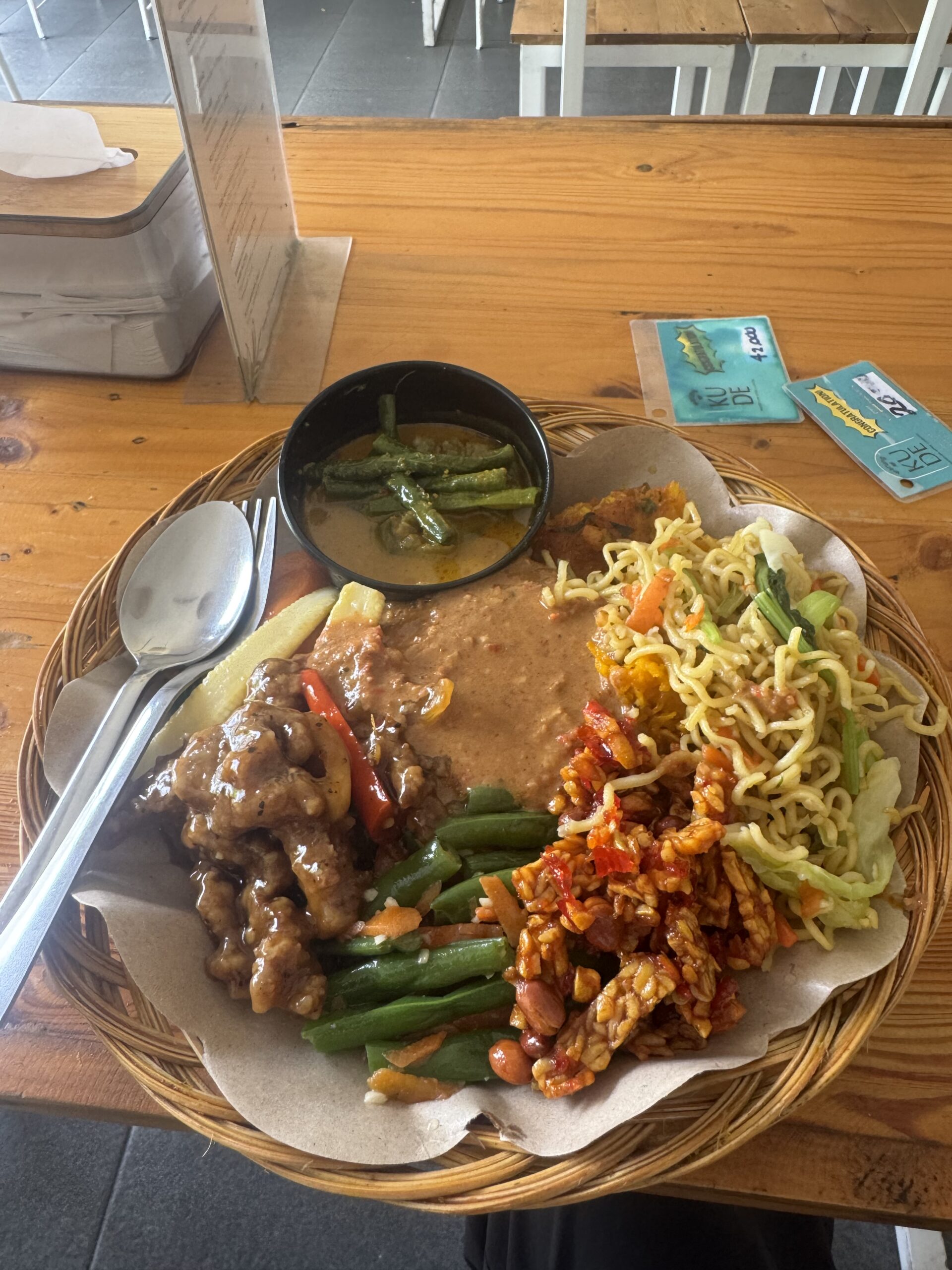
That dish was delish. But truthfully, I’m not a fan of popular Indonesian dishes like mie goreng and nasi goreng.
As far as local food goes, Thailand comes out on top IMO. The dishes are more flavorful. And the curry is to die for (especially massaman curry – my favorite!).
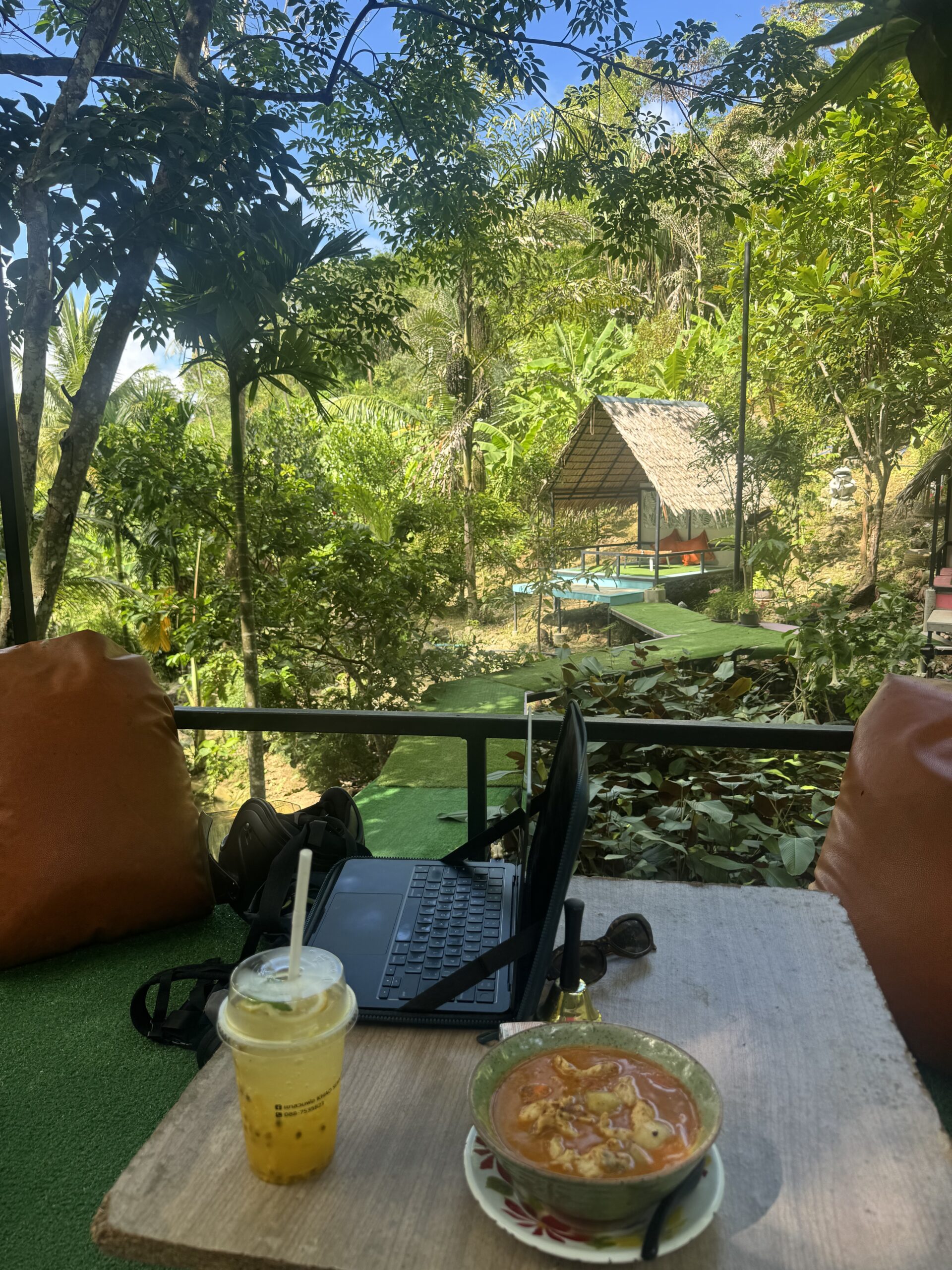
Street food isn’t as common on the islands, but you can still find it if you know where to look.
The coconut water is sweeter in Thailand as well. So sweet that I bought a bottle of unsweetened coconut water at 7-11 and thought that there must be sugar in it. Because in Bali, the coconut water doesn’t have much taste.
BUT the coconuts in Bali are like twice the size of Thailand’s coconuts. So in that sense, you get more bang for your buck.
Ok *that* Bali coconut wasn’t that big. But I swear, normally they are ginormous lol.
Oh and the fruits are SO much fresher and tastier in Thailand too. I don’t know why but there were several times when I ordered a smoothie or juice in Bali and it literally tasted like water. Zero taste. In Thailand, the fruits, juices and smoothies are MUCH more flavorful.

Western food: Bali wins
As much as I like Thai food, I get sick of it after a few days. Personally, I need some variety in my diet! Bali has way more options in terms of Western food. Especially in touristy areas like Canggu, Ubud, Seminyak and Uluwatu.
The Western food that you do find in Thailand tends to be quite expensive. For example, smoothie bowls cost around $10 in Phuket! Crazy right? In Bali, you can find smoothie bowls for $3 – $5 (on the high end).

Salads are also super expensive in Thailand. I went to a tiny, nondescript cafe in Phuket the other day (without AC) and it was $9 for a Greek salad. Yup, NINE dollars. I might as well be in the US!
Organic food: Bali wins
Thailand is one of the world’s top users of agricultural chemicals. One study by the Thai Pesticide Alert Network found that a large portion of fruit samples had pesticide residues that exceeded safety standards.
Bali also has pesticide-ridden foods but studies have shown that they’re below the maximum limits.
I dunno ’bout you, but I definitely don’t want to be eating pesticide-ridden foods. Which is why I try to shop organic. Yes, it’s more expensive but I see it as an investment in my long-term health. Plus, it’s more sustainable. Win-win.
Unfortunately, it’s pretty much impossible to shop organic in Thailand. I haven’t seen a single shop selling organic produce in Phuket. Heck, I don’t even think I’ve seen the word “organic” since I’ve arrived.
Whereas in Bali, I found a few small organic shops in Canggu, Seminyak and Ubud. My favorite was Alive WholeFoods in Canggu (although I can’t say I recommend Canggu… that place is a dump).
There are also some restaurants in Bali which prioritize clean, organic ingredients (one being Bali Buda).
Friendliness of locals: Bali wins
I know that Thailand is known as the “Land of Smiles,” but that hasn’t been my experience. I’m sure that things are different in the North of Thailand, but on the islands and in Bangkok, people are not very friendly.
Take the motortaxi drivers, for example. They rarely strike up a conversation or even smile. I get that there’s a language barrier, but even when I say “kapunka” (thank you), I often get no response. I also feel like people are always trying to sell me something in Thailand.
Here’s an example: I walked into an empty restaurant in Phuket the other day and asked if I could use the bathroom. The woman working there said I had to buy something to use the toilet. I asked to buy a water but she said they didn’t accept credit card (and I didn’t have any cash on me). So, too bad, I couldn’t use the bathroom.
Really?! I mean I know many restaurants have a “clients only” policy… but the restaurant was empty!
I can never imagine that happening in Bali. Because the Balinese people are sooo friendly, welcoming and accommodating.
Kids would wave and shout “hello!” as I walked by. Motortaxi drivers would greet me with a smile and usually ask, “Where are you from?” If they got lost or the address was incorrect, they wouldn’t get annoyed… they’d laugh it off. And if it suddenly started pouring rain in the middle of the ride, they’d pull over and offer me a poncho.
Smoking culture: Thailand wins
One thing I really don’t like about Bali?
The cigarette smoking culture. Nearly everyone smokes cigarettes in Bali (at least it seems that way). Indonesia has the highest percentage of male smokers in the world. Around 71.4% of Indonesian men smoke (although it feels closer to 100% in Bali).
I’m not sure if it’s because Bali attracts smokers but a lot of foreigners smoke in Bali as well. It’s annoying because you’ll be sitting down in a restaurant or open-aired cafe and someone will just start smoking right next to you. Rude!
So in Bali, you’ll end up doing a lot of passive smoking. Whether you like it or not.
In Thailand, FAR fewer people smoke. I’ve also heard that it’s prohibited to smoke in open-air restaurants in Thailand. Whether that’s true or not, I have noticed it much less since being in Thailand. Thank God.
Nature: Tie
Both Thailand and Bali have incredible nature and landscapes. So for this one, it’s hard to go wrong.
Bali has lush jungle, terraced rice fields, breathtaking waterfalls, and cliffs that plunge into turquoise blue waters. The beaches can be amazing (especially in Uluwatu and the nearby Nusa islands). BUT the waves are much bigger. Which is great if you’re a surfer… not so great if you just want to take peaceful dips in the water.
Seriously, those waterfalls were unreal. Photos don’t do justice.
I think most people would agree with me that Thailand has the most beautiful beaches. Powdery white-sand beaches lined with palm trees, turquoise-blue waters, and towering limestone cliffs. I’ll let the photos do more of the talking…
Hard to beat that!
With over 1,430 islands to choose from, there’s no shortage of postcard-worthy coastlines in Thailand. If beaches aren’t your thing, you’ve got gorgeous mountain towns like Chiang Mai and Pai up north, where the air is cooler and the pace is slower. There are also a ton of amazing national parks in Thailand. Like Khao Sok National Park and Khao Yai National park. I haven’t visited yet but they look frikkin’ incredible.
To sum up:
If you’re into jungle vibes, waterfalls, rice fields and surfing, Bali is the place for you.
If you’re into paradisiac white-sand beaches (and peaceful waters), snorkeling, kayaking and hiking, Thailand has got your name on it.
Just keep in mind that the beaches aren’t as pretty during the rainy season due to the murkier waters, debris washed up in the sand and often cloudy skies. Here’s a photo from the beach in Phuket earlier:

Still not bad! Plus, the sunsets during the rainy season are 10/10…
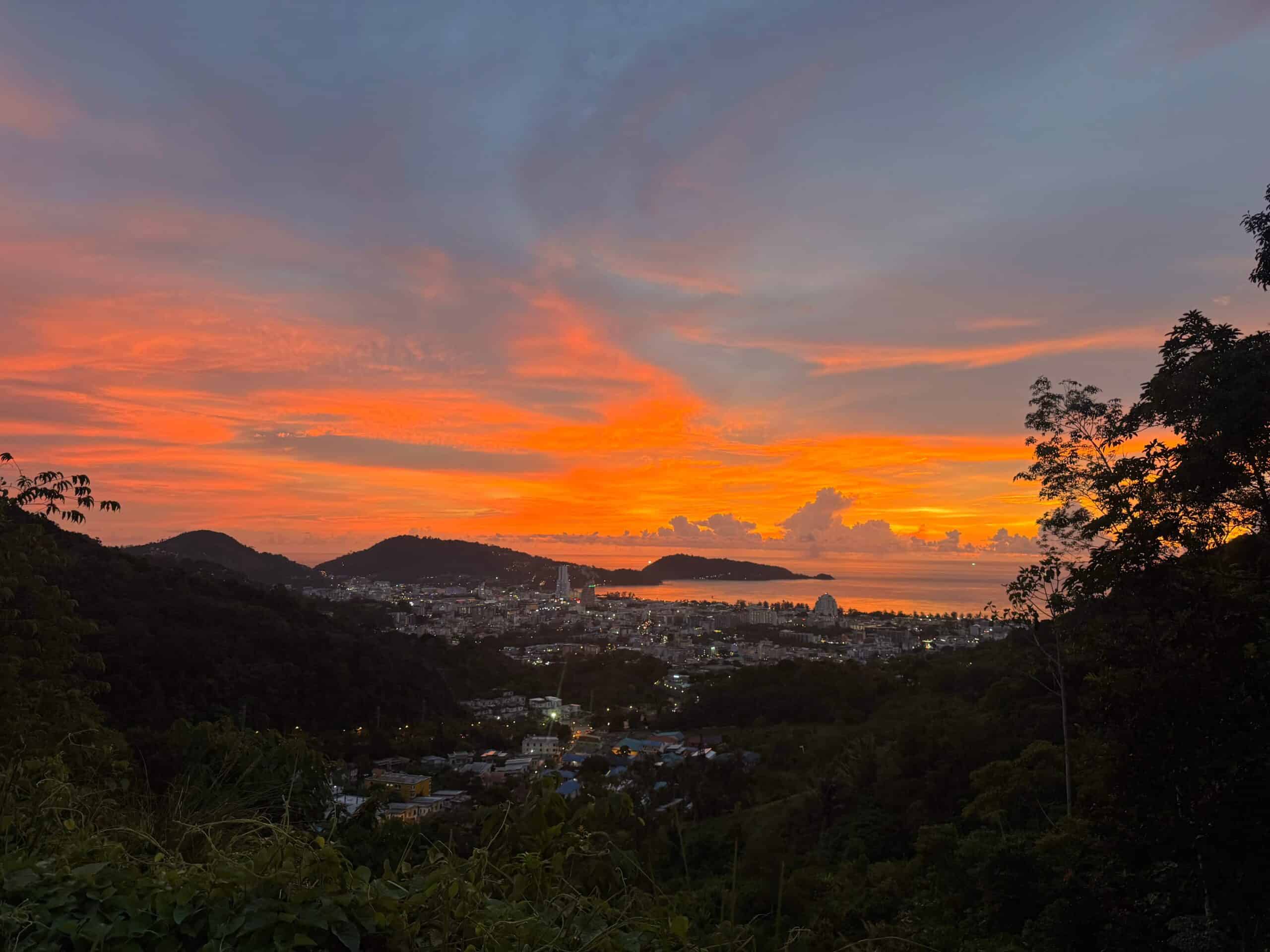
Stylish accommodation: Bali Wins
Bali offers a huge variety of dreamy, affordable accommodation.
Think: bamboo houses tucked in the jungle… cozy homestays with locals… and luxurious villas with pools.
Thailand, on the other hand, can be quite pricey. Especially in the high season. But even in May, the island prices were surprisingly expensive. I chose to stay in Phuket because the prices were much cheaper than anywhere else and there is more infrastructure for working remotely.
That said, Chiang Mai seems to offer more budget-friendly accommodation compared to Bali.
Cafe culture: Bali wins
As far as cafe culture goes, Bali is a digital nomad’s paradise. Especially Ubud and Canggu. There are endless restaurants, specialty coffee shops and cafes to work from. The majority of which have outlets, fast wifi and comfortable seating with cushions.
Many of the ones in Ubud have beautiful views as well…
K those last ones didn’t have very comfortable seating but hey. At least I got some good photos out of it lol.
I know Chiang Mai is probably a different story, but on the Thai islands that I’ve been to, there aren’t nearly as many places to work from. As soon as I arrived in Phuket from Bali, I was like “damn, where are all the comfy cafes??” The only ones I saw had hair-backed chairs and uncomfortable seating. Not exactly ideal for hours of working.
Social scene/community: Bali wins
I’ll be honest: I didn’t meet a ton of people while I was in Bali. That said, there seems to be more of a digital nomad community there and I think it’s probably easier to meet people in Bali.
There are digital nomad events on Nomeo (mainly in Canggu). And Facebook groups like Digital Nomads Bali or Girls in Bali that you can join to meet people. I also used Couchsurfing hangouts for spontaneous meetups (you just have to download the app to use the Hangouts feature).
As far as nightlife goes, both Bali and Thailand have a lot to offer. Bali’s nightlife is more concentrated in Canggu, Kuta and Seminyak. Outside of those areas, you won’t find very much.
Thailand is more of a party destination, especially in Phuket (Patong) and Phi Phi islands. There’s also the annual Full Moon party in Koh Phangnan. Oh and can’t forget Bangkok!
At least from what I witnessed, the island parties are full of 22-year old backpackers looking to get wasted. Based on what I’ve heard, it sounds really trashy. Not really my cup of tea but maybe fun if you’re in your early twenties.
Personally, I preferred the social scene in Bali and found it a bit easier to meet people there.
Safety: Bali wins
When it comes to crime, both Thailand and Bali are very safe. Violent crime is rare in both places. But there seem to be more scams in Thailand. And the Thai incarceration rate of foreigners is much higher in Thailand. Something to keep in mind before you break the law lol.
That said, in Bali you can go to jail for life if you’re caught smoking weed (or doing any sort of drugs). Whereas in Thailand, weed is 100% legal now. And there are cannabis stores everywhere (at least in Phuket).
In terms of road safety, Thailand is one of the most dangerous countries to drive a motorbike. And there are far more motorbike fatalities in Thailand than Bali. Not sure why but I’m guessing that’s because there’s less traffic in Thailand and the road infrastructure is better, which means motorbikes can go much faster.
This person on Quora puts it better than me:

Maybe it also has something to do with the helmets…
In Bali, the mototaxi drivers provide proper helmets that cover your entire head and ears. But in Thailand, some of the helmets the drivers hand you are a complete joke. They don’t even cover your ears and slide off your head (or at least my head) while you’re riding.
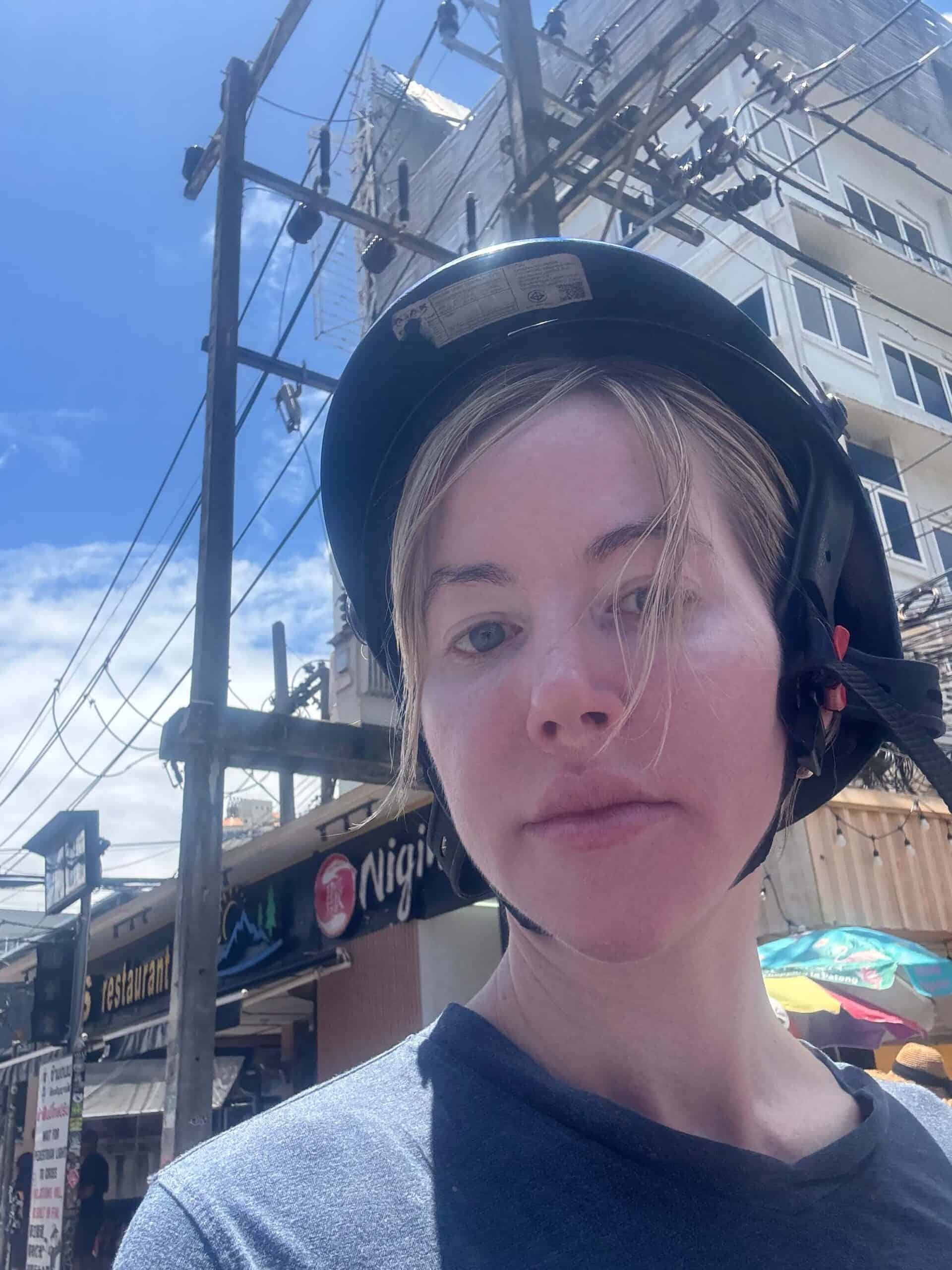
Better than nothing I suppose? But pretty sure I’m screwed if my head hits the ground in that thing lol. I was actually going to rent a helmet while here but the nice owner of the hotel I’m staying at lent me one for free.
Good news is that in Thailand, you don’t *have* to take a motorbike. Driving a car is also an option because the roads are wider and there isn’t much traffic. In Bali, forget about it. If you want to take a car anywhere, you’ll be sitting in traffic for hours.
One thing you have to be careful of in both countries? Street dogs. I love to walk but unfortunately didn’t feel safe sometimes walking in less busy areas.
A couple days ago, I was going for a walk in Phuket and spotted a few dogs lounging on the street ahead. I inched forward a bit to see if it was safe to keep walking… and the dogs immediately sprang to their feet and came charging straight at me, barking. It was terrifying. I ran for about 3 seconds before realizing “ok, no this is the worst thing I can do.” Then I backed away slowly shouting “no” and shoving my bag in their direction.” That seemed to do the trick.
A similar thing happened in Bali once. In Bali, street dogs are literally everywhere. Owners also let their dogs roam free and they can get pretty territorial sometimes. So I got nervous walking in less deserted areas because you never know what dogs are just around the corner. It’s normally safe to walk in more populated areas. But be especially careful at night and in more deserted areas.
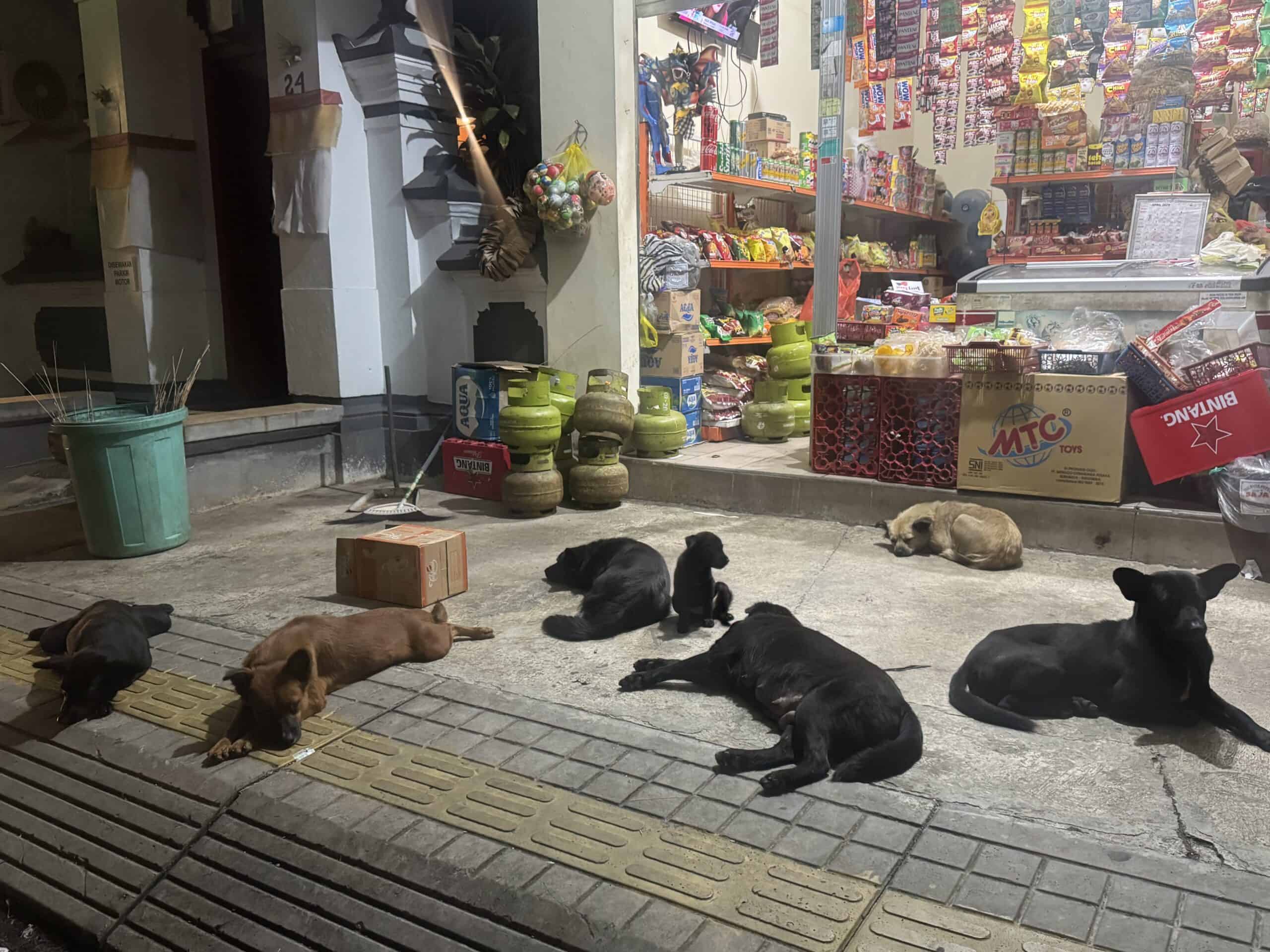
Most of the dogs are harmless but you do have to be careful sometimes.
Speaking of dogs…
Here’s one of the ridiculously cute puppies that lived right next to the villa I stayed at in Bali:

Totally unrelated I know. But she (and her sisters) was honestly the highlight of my stay in Bali.
Here’s a reel if you want to check out more puppy cuteness:
https://www.instagram.com/reel/DKUNlb2JC8U/
K moving on…
Healthcare: Thailand wins
Medical care is more advanced, accessible and affordable in Thailand than Bali. Even on islands like Phuket and Koh Samui, you’ll find top hospitals and clinics, some with English-speaking doctors and state-of-the-art equipment. Take a look at Bangkok Hospital in Phuket…
Bali has sufficient care for basic needs and emergencies. And there are decent international clinics in areas like Canggu, Ubud and Uluwatu. But the quality of care and medical equipment isn’t up to Western standards. If something serious happens, most tourists and foreigners get evacuated to Singapore or Australia.
If you’re in a more deserted area (like Amed in East Bali), you’ll have to travel at least 30-45 minutes to the nearest hospital.
Air quality: Thailand wins
After living in Bali, I now have a newfound appreciation for clean air. The air quality in Bali is so bad that I started wearing a face mask around. This is a big reason why I would never live in Bali (and frankly, a big reason why I don’t plan on going back to visit anytime soon either).
So why is the air quality in Bali so bad?
The locals burn trash at all hours of the day (particularly the late afternoon).
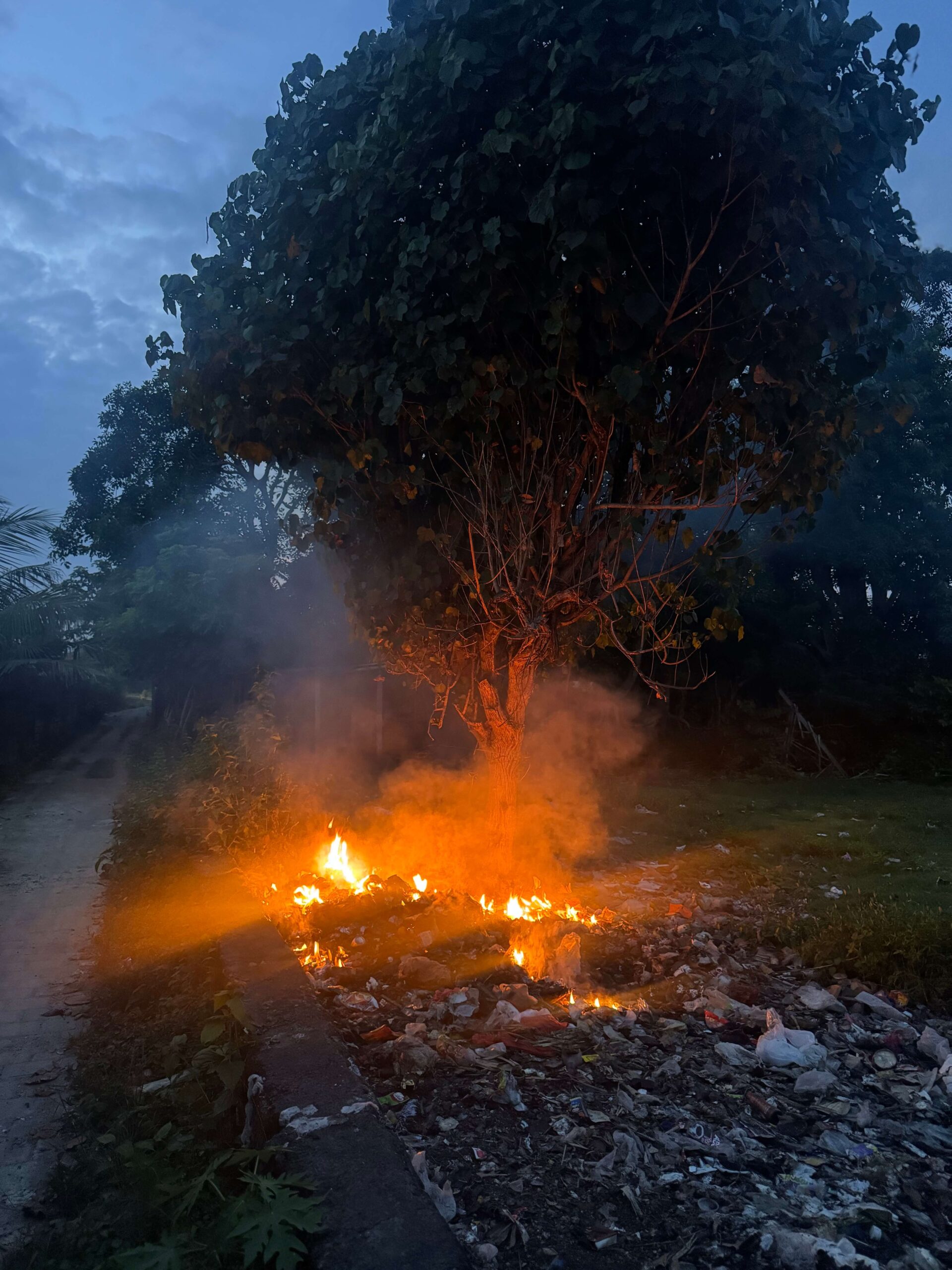
Add in the exhaust fumes from all the motorbikes, seasonal burning of the rice fields, cigarette smoke everywhere…
And suffice it so say that the air quality in Bali is *not* good. At least not in Canggu, Ubud and Uluwatu. I rarely was able to smell nature in Bali.
Thankfully, I didn’t notice much trash burning in Thailand. The air quality seemed way better than Bali.
Traffic: Thailand wins
Traffic in Bali is baaaad. Especially in popular areas like Canggu, Seminyak, Kuta, Ubud, and Uluwatu. So bad that the motorbike drivers use sidewalks as another lane lol.
In case that video didn’t convince you…
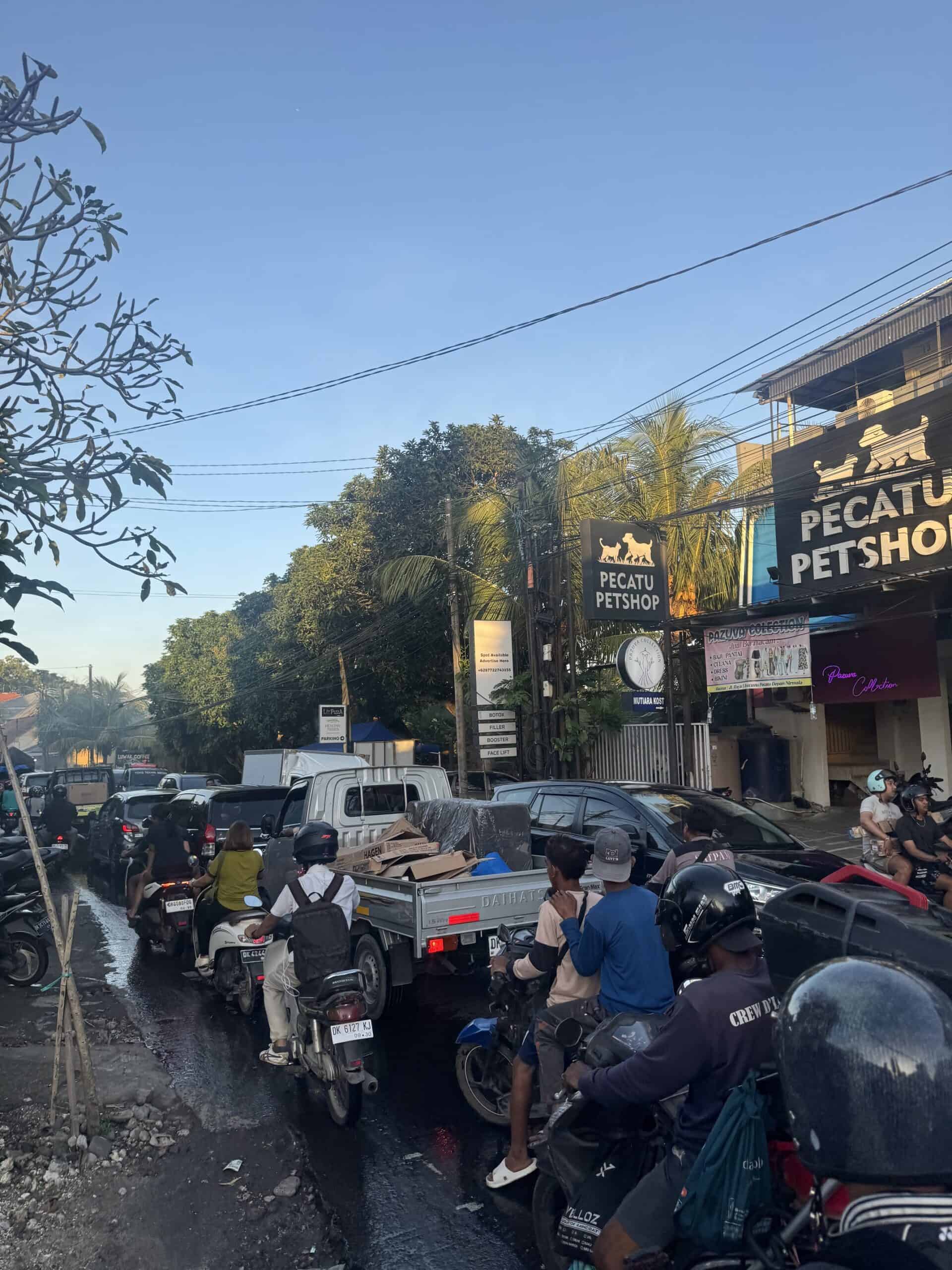
The streets are narrow and weren’t built to handle the volume of cars and motorbikes that exist today. There’s no clear traffic system. The sidewalks are too narrow, broken or nonexistent. And there’s poor drainage, which leads to flooding on the roads after even just a small amount of rain.
So what should be a 10-minute ride often turns into a 30–45-minute ordeal. Especially during peak hours or rainy season when flooding adds to the chaos.
In Bali, there are certain unwritten rules while driving. That’s yet another reason why it’s probably not the best idea to start driving in Bali unless you a) already know how to drive a scooter well and b) know the rules of the road. Many intersections don’t have traffic lights so cars and scooters barrel through, coming from all directions. Looks a little something like this:
In Thailand, you won’t see that sort of thing. Intersections have traffic lights and the rules of the road are more enforced.
The traffic in Thailand also feels way more manageable (Bangkok aside). The roads are wider and there aren’t nearly as many cars and motorbikes clogging them up.

Transportation: Bali wins
It’s pretty easy to get around Bali, especially if you stay in one area. But there isn’t any public transportation so you’ll have to take a motorbike (or car) to get anywhere.
I don’t dare drive a motorbike (no way I wanted to learn on those roads lol). So I took Grab motortaxi everywhere.
In Bali, you can also use two ride-hailing apps: Grab or Gojek. I never used Gojek but have heard that Grab is cheaper and offers more discounts.
With Grab, I rarely had to wait for more than a few minutes for a ride. Most trips cost between 50 cents to $1.50, depending on the distance.
If you want to rent a motorbike, the price should be between 50K to 150K per day ($3-$10).
In Thailand, motorbike rentals tend to be more expensive (200-300 baht per day or $6-$9). As mentioned, it’s also doable to drive a car since the roads are wider and there’s not much traffic.
But getting around the Thai islands is much pricier than Bali. I use the ride-sharing app, Bolt, and it costs me around 60 baht ($1.50) for a 10-minute ride. 150 baht ($4.50) for a 30-minute ride. In Bali, that would have cost half the price (or even less).
In Phuket, there are buses (called “songthaews”). But they *aren’t* cheap so I haven’t found it worth it.
In more touristy areas of Thailand, you can find tuk-tuks as well (which are three-wheeled vehicles with proper seating in the back). They’re much more expensive than motortaxi (always try to negotiate the price before you get in). But they’re fun!
Communication: Bali wins
I (regrettably) don’t speak Thai or Bahasa (the official Indonesian language). So it’s not always easy to communicate with the locals (let’s just say I’ve relied a lot on Google translate!).
That said, the Balinese people tend to speak better English than Thai people. Many of the Grab drivers, for example, can hold a basic conversation. In Thailand – forget about it.
It’s also much easier for anglophones to learn Bahasa compared to Thai. Because Bahasa uses the same alphabet as English, has a fairly straightforward pronunciation and simple grammar. For example, there are no past/present/perfect tenses or gender specific nouns.
But Bahasa isn’t the only language spoken in Bali. The Balinese people have their own language too, which is very different from Bahasa. But most people learn Bahasa because there are many people from Java and other parts of Indonesia living in Bali, so it’s the most commonly spoken language.
Payment methods: Bali wins
In Bali, you rarely need cash. You can use credit card to pay for pretty much anything.
In Thailand, many places are cash-only (yup, still. Even in 2025!). So you’ll have to make numerous ATM trips, which can be annoying.
In both places, businesses almost always add 2-3% to transactions paid with credit card. Also annoying but it is what it is I suppose.
If you find yourself in a cinch (need to pay with cash and don’t have any on you), you could try transferring the money via Wise. I’ve done this a few times (both in Thailand and Bali). All you’ll need is the person’s bank account information.
Visa process: Thailand wins
For most nationalities, it’s easier to get a visa in Thailand. Most travelers get 30 days visa-free. And you can extend another 30 days at immigration. No payment required.
Indonesia gives you 30 days with a visa on arrival. But you have to pay 500,000 IDR ($30 USD). You can extend the visa online for another 500,000 IDR. Good news is that it’s super easy, so you don’t have to go into the immigration office in Depansar (which used to be the case).
Bottom line: At least for short-term stays, Thailand’s visa process is cheaper.
Crowds and construction: Thailand wins
While both Bali and Thailand are tourist hotspots, Bali feels way more overcrowded. In places like Canggu and Uluwatu, there is construction on every corner. Literally. It’s sad to see such a beautiful island being destroyed and replaced by buildings.
The even sadder part is that many locals are being priced out, as rent prices skyrocket to meet the demand from tourists.
To make matters worse, the infrastructure has stayed the same. I explain things more in my blog post on living in Bali, but the bottom line is this:
The amount of development happening in Bali just isn’t sustainable. There’s no proper waste management system (hence all the traffic burning). The sidewalks are either nonexistent or have gaping holes. And the roads are narrow and not designed for so much traffic.
Thailand has busy areas too. But even in Phuket, I didn’t notice nearly as much construction as I did in Bali. Plus, the infrastructure is much better so the development that you *do* see is more sustainable.
Which brings me to my next point…
Infrastructure: Thailand wins
Thailand has *much* better infrastructure than Bali. The streets are wide and well-paved with traffic signals. Whereas in Bali, most roads are narrow with lots of potholes and minimal signage.
The one thing that both places are missing? Sidewalks. There are some sidewalks in both Thailand and Bali (particularly in the center areas). But not many. Which makes walking quite dangerous (at least on the main roads).
There’s one busy road outside my coworking space in Phuket and I have to take a mototaxi for what would be a 12-minute walk because it’s simply too dangerous to walk.
Otherwise, Thailand tends to have more stable Internet and more modern accommodation and public transport options. In Bali, those things can be hit or mess depending on where you’re staying.
I didn’t experience any major issues while I was in Bali. But one place I stayed at didn’t have hot water that lasted more than a minute. And one day, there was a power outage on the entire island that lasted a couple hours. Island life I suppose!
Cost of living: Bali wins
Bali isn’t as cheap as it once was, but it’s still much more affordable than the Thai islands. Again, I’m sure the north of Thailand is much cheaper. But when it comes to places like Phuket, Koh Samui, and Koh Phangan (or any Thai island really)… prices can add up quickly.
Accommodation, transportation, and even food tend to cost more in Thailand. That said, Uluwatu (in Bali) is very expensive and probably comparable with Thailand (or even more).
But overall…
If you’re on a tighter budget, Bali wins this round.
Bali vs Thailand: My Final Verdict
If you asked me two years ago whether I prefer Thailand or Bali, I would have said Bali. Hands down. The first time I visited Bali, I was completely enamored with the island. The friendly locals… the breathtaking scenery… the magical temples… the culture.
I’m not sure if the island has changed or my perspective… maybe both?
But after spending two more months in Bali in 2025, I can say without a doubt that I prefer Thailand now.
Even though technically Bali “won” more categories than Thailand… Thailand wins on (most of) the things that matter.
Don’t get me wrong: Bali is an amazing place (and one of the most beautiful places I’ve ever been). But the constant traffic, never-ending construction and smoke-filled air put a damper on my experience and made it harder to enjoy this time around.
Thailand, on the other hand, felt more livable. The air is cleaner, there’s more space to breathe (literally and figuratively), and the infrastructure is better.
So for those reasons… I’d pick Thailand over Bali.
What about you? Do you agree? Curious to hear your thoughts. Lemme know in the comments!
Oh and if you want to become a digital nomad (and travel to places like Bali and Thailand *while* making a full-time income)…
Check out my Nomad Copywriter Starter Kit.
Inside, you’ll get everything you need to master the copywriting basics, land your first few clients and become a digital nomad like me:
